Text
Suburbia

Director Penelope Spheeris Stars Bill Coyne, Chris Diddley, Jennifer Clay USA 1983 Language English 1hr 34mins Colour
Grim account of LA squat life
Penelope Spheeris’ Decline Of Western Civilisation is an extraordinary portrait of LA’s late punk scene – the bands, the journalists, the venue managers and, most hauntingly, the kids. It makes sense that she should follow that documentary with a feature film that explores the culture some more.
Suburbia is a bleak film. It’s an anti-romantic view of the scene – it reminds me of Slouching Towards Bethlehem, Joan Didion’s account of Haight-Ashbury in 1967: these aren’t artistically ambitious bohemians, these are desperate children with nowhere else to go.

After a truly WTF? shock prologue, the story begins with Evan (Bill Coyne), who looks about 15, leaving home after his alcoholic mother has chucked glass bottles at him once too often. He goes to a hardcore punk gig and meets Jack (Chris Diddley.). Jack takes Evan back to TR House, a squat in an abandoned suburb (re-reading that sentence, I think I need to clarify that Jack is purely being helpful). As the only one with a car, Jack is sort of the leader.
The TR kids, who have plenty of problems of their own, acquire antagonists in a pair of would-be vigilantes, angry newly unemployed suburbanites with guns, rage and a lot of time on their hands.

If you had asked me, I would have guessed – based on fuzzy memories – that this is all seen from the kids’ point of view. But we spend time with the angry middle-aged guys and also with the film’s moderating voice, the one adult sympathetic to the TR crew. That’s Jack’s stepfather Bill (Donald V Allen), sneered at by the kids for being the worst possible sell-out to the system: not just a cop, a black cop (the TR lot are all white, I think).
Considering the big chunks of footage of sonically and lyrically confrontational music being played live (DI, Vandals and TSOL are the bands), you have to assume that the intended audience was young folk at least interested in this kind of noise. But most of the performances are cut short by trouble in the crowd, not all (admittedly) caused by people there for the show. So it doesn’t paint a rosy picture of hardcore.

And while there are moments of tenderness and camaraderie in TR house, Spheeris lets the camera linger on the squalor, the discomfort. If you were a kid with an even halfway tolerable family in 1983, this film seems like it is putting in the work to make you feel that squatting is not an appealing lifestyle choice.

Meanwhile, what are we learning about the aesthetics of the SoCal scene? There’s no uniform here – we’ve got skins, leather-clad punks, proto-goths, girls doing that scarves-as-hairbands thing that was taken mainstream by Bananarama and Madonna.

I’ve always thought of hardcore by this point as being quite insular but at TR house we see logos on the walls for the two opposing wings of late British punk – the fundamentalism of Oi! (a lot of which – but not all – leant right-wing) and anarchist collective Crass, who had no fear of intellectual ideas.*
Rewatching, Suburbia was better than I remember – the plot mechanisms are crude and feel driven by the point the filmmaker wants to make, but the stuff that’s just the kids** hanging out is strong.
*Over the course of my working life, I’ve had a huge number of colleagues who had been or still were in bands. This was unsurprising when I was working on pop/rock magazines but has also been the case at (eg) an architects studio. One of the more notable was a former member of Crass. **There aren't any future acting stars in the cast, but the kid with the dark hair in the picture at the top is played by Mike B the Flea – ie, Flea, soon to be of the Red Hot Chilli Peppers.
Part of my ‘Every girl should be given an electric guitar on her 16th birthday’series
0 notes
Text
Two For The Road

Director Stanley Donen Stars Audrey Hepburn, Albert Finney, Eleanor Bron, William Daniels UK/USA 1967 Language English, French, Italian 1hr 51mins Colour
Surprisingly enjoyable snapshots of a relationship going from carefree fun to stuck-in-a-marriage agony
Joanna (Audrey Hepburn) and Mark (Albert Finney) are a well-off but very unhappy English couple about to catch the air ferry* to France. Their plane flies over a sea ferry on which Joanna and Mark are about to meet for the first time – as we’ll see repeatedly, he thinks he lost his passport and she knows where it is.
That version of J&M will also cross paths with a recently wed version travelling in a station wagon with his American ex (Eleanor Bron), her numbers-obsessed husband (William Daniels) and their spollt daughter. Then there are two more iterations as they move from being broke but mostly happy to well-off but constantly sniping at each other.

In a way, Two For The Road foreshadows One Day, (500) Days Of Summer and the Before trilogy as we catch up with the state of a relationship by checking for a few days at a time, but until any of those we’re constantly returning to each of the timelines. It’s very deftly done – we can clock where they are by the form of transport they’re in (from hitchhiking to a Mercedes), the changing styles of Joanna’s hair (Mark’s stays the same) and how much they like each other at that point.
There are two obvious paths for this: one – which Finney’s performance rather leans into – is that this marriage has turned fully toxic and they are only doing damage to each other by staying together. The other is one of those stories where it’s clear that these two crazy kids will remember who they were before the grind of adult life got in the way and joyously reconcile. But the film takes the tricky middle ground – giving us plenty of harsh moments and bad behaviour on both sides at the same time as showing us when it was truly fun.

I say both sides, but although Joanna is not blameless, Mark is more of the problem. He’s an architect, a profession that as so often in the movies is shorthand for obsessive and arrogant. And when they first meet, she’s not even the member of her all-female choir that he’s after – that’s Jackie (Jacqueline Bisset) (honestly, fair enough.) There’s an asymmetry there from that start that continues. (Incidentally, in real life Hepburn was seven years older than Finney, though was often cast in parts younger than her age, as here.)

All of which makes the tonal balance director Stanley Donen manages very impressive. The film manages to skip along while not shying away from nasty arguments. I guess helps that we’re on holiday with the characters all the time, it’s all sundrenched and touristy France even when things are otherwise grim. From the start I felt happy to be with this pair even though they are not happy together.**

Two For The Road is a 1967 European-set film made by a veteran Hollywood director – it could feel either try-hard hip or hopelessly old-fashioned. I think it’s neither. It looks properly great, plenty of good location shooting (which also meant that much of the dialogue has clearly been replaced during editing, but that’s OK.) I would say it’s lightly post-Godard – more free-wheeling than traditional American movie making but never near to a cringeworthy level. The most obvious sign of the times are the great-but-kind-of-batshit clothes and sunglasses Joanna wears in the latest of the timelines.***

If you’re after something that could only be 1967, then I’d refer you to the other film Donen had out that year – the Peter Cook/Dudley Moore faustian comedy Bedazzled, particularly the unbeatable scene with the title song.
I first watched this film a long, long time ago and had remembered liking it. Recently, it had sat on my list of movies to revisit for a while before I was prompted to watch by the episode about Donen in the Old Man Is Still Alive series of Karina Longworth’s (mighty) You Must Remember This podcast. Coming back to Two For The Road, I was anticipating I would find it grim but interesting. It turns out I found it enjoyable and actually better than I remembered.
*An air ferry, you might be asking? You used to be able to pop your car in the hold of a passenger plane in Kent and nip over to France. The film takes place near the end of when those services operated – my guess is that they were killed off by the introduction of cross-channel hovercraft.
**Maybe it’s because I’m not married that I can freely enjoy movies like this or Journey to Italy or Before Midnight (yes, I know Jesse and Celine are not married but you know what I mean). ***Oh, and also the fact that Mark's rich patrons have phones that can be plugged into the sockets that they seem to have everywhere in their house and out on the terrace.
0 notes
Text
The Trip

Director Roger Corman Stars Peter Fonda, Bruce Dern, Salli Sachse, Susan Strasberg, Dennis Hopper USA 1967 Language English 1hr 22mins Colour
Surprisingly sensible(!) early LSD flick
I’m always happy when a movie delivers on its title. Around nine minutes into this one, an LA ad director Paul (Peter Fonda), drops acid for the first time. The entire rest of the film consists of his experience during that trip. Some of the time we’re in his head and sometimes we’re watching him. There’s a cursory set-up – his divorce is almost final – and there’s a sense that although he defends advertising, he’s envious of truly countercultural folk.

To me, the fascinating thing is that although this was produced by the legendary exploitation pic outfit American International Pictures and we get introduced to a lurid bunch of hippies led (of course!) by Dennis Hopper, Paul’s trip itself starts off in incredibly responsible circumstances. He’s doing it solo, thoughtfully guided by his chum John (Bruce Dern), who has carefully organised the setting and even has Thorazine on hand in case of a bad trip. It’s almost educational, like ‘here’s how to take LSD safely.’
The big challenge, of course, is how you show the trip itself. It’s always the question for films and TV shows that dabble in drugs. My view is generally that it matters less how authentic the scenes – and after all, few things are as subjective as a mind under the influence of whatever substance – more whether they are absorbing or entertaining.

The Trip uses various approaches. One is a bombardment of light and shapes – these I think are pretty ace, apart from a literal kaleidoscope, which seems a bit basic. Another some very familiar fantasy sequences, the most frequent being Paul, all dressed in white with a rather billowy blouse, being chased through a forest and along a beach by hooded riders. There are other scenes, including some in a gothic house, which I assume are in there because director Roger Corman had sets and costumes left over from his Edgar Allan Poe movies.

Eventually, and I don’t feel this can count as a spoiler, Paul takes advantage of the one brief moment poor John lets him out of his sight and explores night-time LA, including a very funny visit to a laundrette.
By and large, the film is at its best when we have two-hander scenes. When we get gatherings of freaks*, it does remind me that this comes from the company that until the year before was making Beach Party movies.
And that’s the tension that lies within The Trip and its subsequent reputation: on the one hand, it’s an AIP production, directed by middle-aged veteran Corman.** On the other, here’s a chance to watch two of the writer/stars of Easy Rider together a couple of years before that landmark of the New Hollywood, plus the screenplay for The Trip is by another member of that movie’s cast – Jack Nicholson. Not to mention Dern, another actor who would be fairly significant in the 1970s.

Hey, do you think someone had seen The Seventh Seal? I think all that means that this tends to get filed alongside The Monkees' Head as a film that has elements of the Hollywood revolution that was on its way but isn’t quite the real thing. And as with Head, in some ways I like this better than a bunch of the more canonical films that made a few years later.
The Trip doesn’t always work. Some of the stories/images running inside Paul’s head – particularly the horse/beach stuff – are pretty hokey. Then again, maybe that’s meant to remind us that this is a guy who makes ads and that hallucinogens only open up who you actually are, not turn you into a new person.

Overall though, I think this is kind of excellent, with some startling bits of image-making and terrific casting. It’s easy to go, ‘Of course, Dennis Hopper,’ now, but that audiences didn’t have that sense of Hopper locked in at that point, a time when he was almost certainly the only person regularly working with both Andy Warhol and John Wayne. And Dern is so very good as the sensible hipster.
A couple of caveats about why my enthusiasm for this film might not be your enthusiasm. Firstly, I love a one-crazy-night movie – it’s an approach I often find satisfying. And secondly, more contentiously, I’m well disposed towards people-do-drugs movies. Obviously, they can be boring as hell, but just off the top of my head – Dazed And Confused, A Field In England, A Scanner Darkly, Inherent Vice, (less obviously) Farewell My Lovely/Murder My Sweet – not even delving into the coke movies (GoodFellas, Boogie Nights)… Then again, if you find this stuff annoying, you were never going to watch The Trip, where you?

Hanging out with Gram...
*The trivia bit I knew well before I ever watched this film is that the band in the club are played by The International Submarine Band, but because – despite the psychedelic implication of their name – ISB were actually country rockers, they were dubbed over by music from The Electric Flag. I can see why you wouldn’t use Gram Parsons’ music in this film but I don’t enjoy The Electric Flag stuff much. Meanwhile, the amazing house where Paul starts his trip was, at the time, the home of Arthur Lee of Love. A Love soundtrack would have certainly taken this film up a notch or two.
**Reputedly, Corman took acid beforehand so that he could understand what he was trying to show.
1 note
·
View note
Text
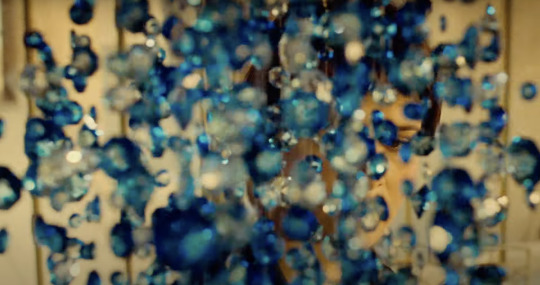
Trois Couleurs: Bleu
Director Krzysztof Kieslowski Stars Juliette Binoche, Benoît Régent, Charlotte Véry France/Poland/Switzerland 1993 Language French, a little bit of Polish and Romanian (with English subtitles) 1hr 38mins Colour Weirder-than-you-maybe-think film about grief
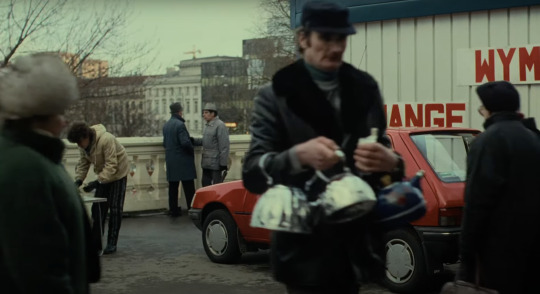
Trois Couleurs: Blanc
Director Krzysztof Kieslowski Stars Zbigniew Zamachowski, Julie Delpy, Janusz Gajos, Jerzy Stuhr Switzerland/France/Poland 1994 Language Polish, French (with English subtitles) 1hr 32mins Colour
Terrific dark comedy about Poland not long after the fall of Communism
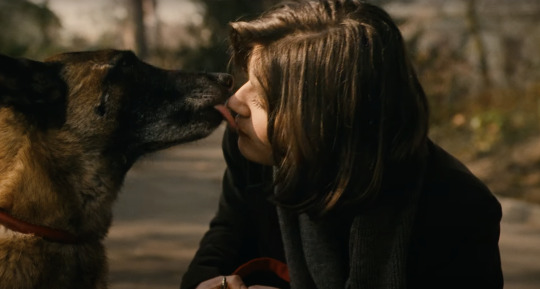
Trois Couleurs: Rouge
Director Krzysztof Kieslowski Stars Irène Jacob, Jean-Louis Trintignant, Jean-Pierre Lorit, some excellent dogs France/Switzerland/Poland 1994 Language French (with English subtitles) 1hr 39mins Colour
Possibly worth it just to hear how ‘chewing gum’ sounds in French
Just thinking about the Three Colours films takes me back to a time of people asking (and expecting the answer to be yes) if you’d read The Shipping News or Miss Smilla’s Feeling For Snow, a pre-fully-fragmented-mediascape time when there seemed to a sort of shared upper-middlebrow culture, or at least among people I knew. And in that mid-‘90s moment, Three Colours was a very big thing.
Apart from anything else, it was a smart piece of marketing, a trilogy announced from the start but not based on anything already existing, all released in a period of just over a year, with a fairly blatant selling point being the idea that each instalment stars a gorgeous French actress (we’ll get back to exact truth of that.)
Here was a hugely respected (if not massively watched) director, Krzysztof Kieslowski, who had laboured heroically under the constraints of Communism and could now make the most of both artistic freedom and French cinema budgets etc. Whatever the reason, the concept certainly caught a mood.
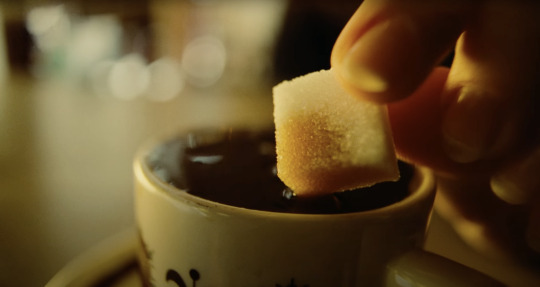
But although there are nice little connections between the films (admittedly much easier to spot when you watch on consecutive nights than months apart), one of them is very much not liked the others, and I’m wondering whether there was a bit of Trojan horsing going on.
Blue (the first one) and Red (the third) are the matching pair, philosophical dramas in which the main character is a beautiful young woman with a dark bob, the action is triggered by a car accident, the dialogue is mostly in French and we’re here to ponder grief, loneliness, morality, mortality and art.
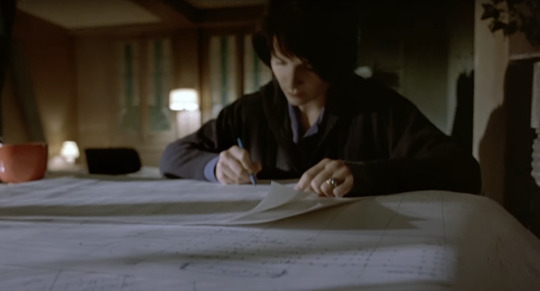
In Blue, Juliette Binoche plays Julie, who has just lost her daughter and her husband, a famous composer.* There are rumours that she was the actual talent in the couple – will she complete his last great work or stick to her attempt at living an anonymous no-baggage life in the middle of Paris?
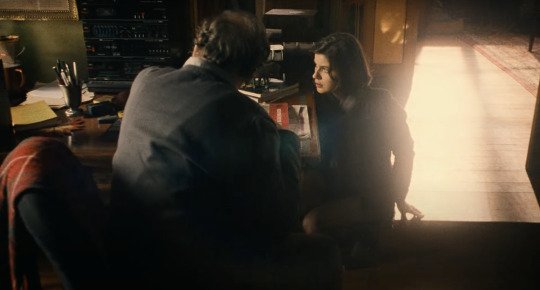
In Red, model Valentine (Irène Jacob) stumbles into the life of a cranky retired judge (Jean-Louis Trintignant) and is both creeped out and sorry for him, and they slowly get to know each other. It takes place in and just outside Geneva.
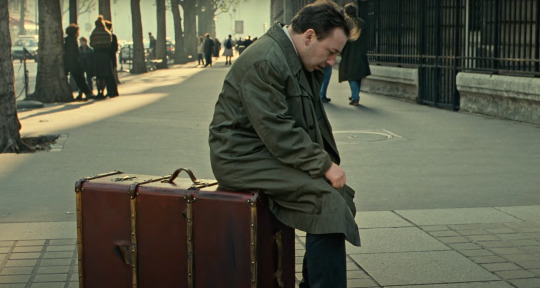
White is not a drama, the main character is not (despite what some of the posters suggest) a beautiful young woman and most of the dialogue is not in French. No, White is a comedy about post-Communist Poland in which the main character is Karol Karol (Zbigniew Zamachowski) a little dumpling of a bloke. The tone, the look, the pace, the casting, are all radically unlike Blue and Red. This is a film in which (spoilers I guess) a man smuggles himself back into Poland by hiding in a suitcase in the hold of an airliner. And while classical music is grandly important in the other two, in White the key musical moments are Karol playing a comb-and-paper. Blue and Red are mood pieces light on plot, whereas White has multiple schemes stacked on top of each other.
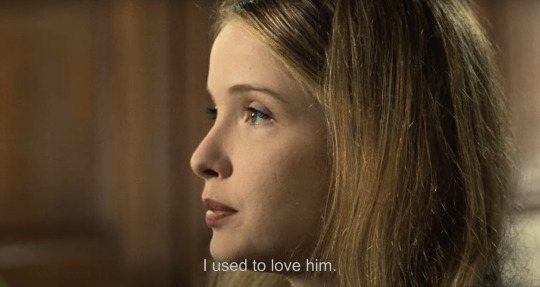
In brief outline, Karol, a talented hairdresser, is divorced by his French wife Dominique (Julie Delpy), ends up homeless and busking in the Paris metro, makes it (just about) back to Poland and (like many of his countryfolk at the time) tries to get rich quick. My take, for what’s it worth, on what we’re seeing is that if you take a country where, in a completely dysfunctional Communist economy people had habitually (and often out of necessity) ignored the rules, when you replace that with a free market, those people aren’t going to suddenly start scrupulously obeying regulations or let tax officials know how many dollar bills they have stashed under the mattress, etc…
Blue and Red remind me of Hirokazu Kore-eda’s 2019 film La Vérité (which, as it happens, also stars Juliette Binoche) – foreign director comes to France (and Switzerland, in the case of Red) and makes something that feels as close as possible to the work of an actual French person. Whereas White is emphatically a Polish film made by Polish people about Poland.
Now, as in 1994, White is easily my favourite of the three. It’s just more my kind of thing, funny and absurd and surprising. But that’s not to knock Blue and Red, both absorbing films that are a fair bit weirder than I had remembered. (Not to mention how full-on 1990s Blue is with all the colour filters used – and this is a good five years before Out Of Sight, for instance.)
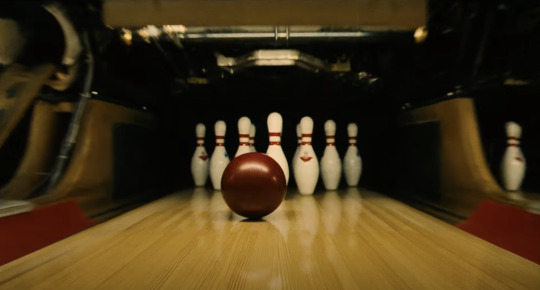
It's the 1990s. so there's a bowling scene, of course (Red)
Red, in particular, is better than it had become in my imagination. I understand why this is – it’s easy in memory to reduce it to ‘pretty girl stirs the heart of old grump back to life’ but the film is stranger and smarter than that. (There’s also an odd subplot that fits more with Kieslowski’s Polish stuff.) And the ending really works for me.
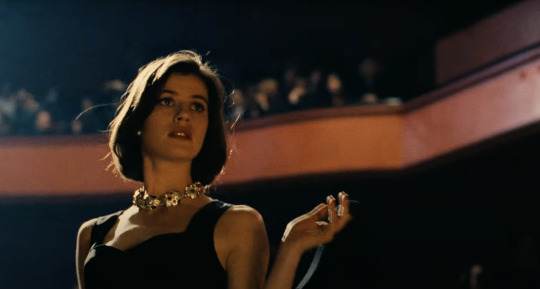
A few stray points: 1) Binoche is only a couple of years older than Jacob, but the trilogy has them at very different life stages. I bumped against this a few times in Blue – at one point her character says, ‘I’m 33’, which on the one hand doesn’t seem old enough for everything that’s meant to have happened in her life and on the other, feels considerably older than she looks. (Binoche was 29 and could easily pass for 25.)
2) The build-up to the car accidents in both Blue and Red gets what British TV viewers will think of as the full Casualty treatment: we’re fully alerted of what’s about to happen. I guess there’s a workings-of-fate notion there, but feels clumsy and unnecessary to me.
3) Love the almost (but not quite) identical scene that happens in each movie.
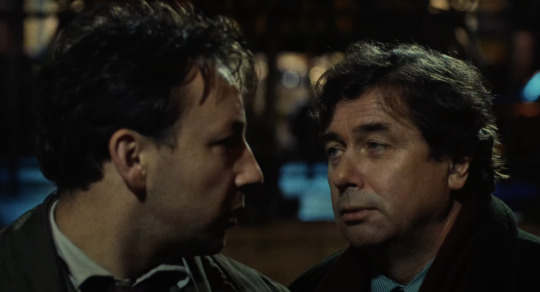
4) Love Janusz Gajos and Jerzy Stuhr as the depressed friend and the brother in White. Also, I should say that Julie Delpy is excellent in the film, it’s just if you’re expecting to see her on screen for the bulk of the running time, you’ll feel shortchanged.
5) These are beautiful films. 6) Look at those running times! That’s how you do it.
7) Do I have any idea at all about the films are trying to say about liberté, égalité, fraternité? Not a Scooby, folks, not a Scooby.
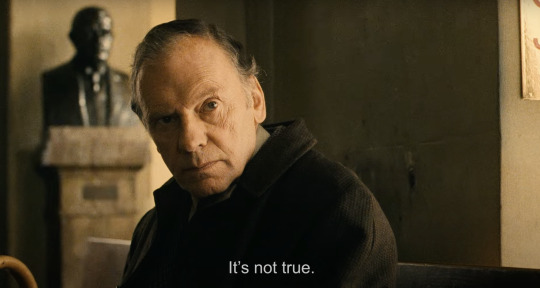
I guess my question going into this rewatch was whether the Three Colours films were the kind of glossy, superficially serious arthouse product that get great reviews at the time but fade with the passing of their moment of fashion? I hope I’ve made clear that White was in fact never that kind of film – loved it then, love it still. But Blue and Red also, I’d argue, still stand up.
*Which had me thinking: are there any living composers as famous as this guy is meant to have been? Even in France? Even in the 1990s?
3 notes
·
View notes
Text
A Complete Unknown

Director James Mangold Stars Timothée Chalamet, Edward Norton, Monica Barbaro, Elle Fanning USA 2024 Language English 2hrs 21mins Colour
Curly-haired bloke buys an electric guitar. Lots of people, some supposedly responsible adults, act like someone had chainsawed their children
Here’s why I think this film following Bob Dylan from 1961 to 1965 exists:
Bob Dylan remains a undimmable hero to the Baby Boomers, controversial in his prime but now less, uh, complicated than many of his peers, and has some traction with the succeeding generations, too
Music biopics continue to do good business. Last year’s Bob Marley: One Love made no discernible cultural impact but picked up $180m worldwide at the box office
Timothée Chalamet is now indisputably a movie star and has the bushy mop of hair needed to play Dylan
With Walk The Line and Ford v Ferrari, director James Mangold has shown he can recreate the 1960s in a way that’s both handsomely cinematic and feels alive*
Here are four works whose existence meant I was doubtful that there was any artistic need for A Complete Unknown:
Don’t Look Back – DA Pennebaker’s extraordinary fly-on-the-wall documentary shows us snarky, sarky, sulky, sparky Dylan at his peak in 1965
No Direction Home – Martin Scorsese’s comprehensive (3 hours plus) doc taking us from Dylan’s childhood up to 1966, framed with footage taken from Eat The Document, Pennebaker’s long-lost follow-up to Don’t Look Back. Many of the key figures in A Complete Unknown, including creaky old Bob, contribute
I’m Not There – Todd Haynes’ ambitious attempt at reinventing the biopic, with assorted Dylan personas filmed with different actors (Cate Blanchett, Heath Ledger, Christian Bale, Richard Gere and more) and in different styles. It doesn’t all work but often does and the concept is a great one
Inside Llewyn Davis – Dylan himself is only glimpsed but the Coen brothers’ somehow both loving and brutal portrait of folk-boom-era Greenwich Village captures the moment without that getting in the way of a terrific character study
Leading to the resulting question: could A Complete Unknown add much that those four films don’t already have? We’ll get back to that.

The first thing to say is that James Mangold, as expected, delivers a pretty, visually satisfying film rich with, but not suffocated by, period detail. Here, 1964 feels organically different from 1961 without people shouting ‘Have you heard the Beatles?’ (I mean, we do get lots of Walter Cronkite on the TV updating us on the Cuban Missile Crisis, March on Washington etc, but I think in the context of this story, that’s fair enough.)
The second is that Chalamet is really good. It’s unsettling when you get to a song playing over the closing credits and suddenly clock that he doesn’t actually sound like Dylan, when for the running time of the film, at least for me, watching him act as Dylan had fooled my brain to hearing him as Dylan.

And indeed, almost the whole gang are immaculate. Monica Barbaro, as many people have said, is remarkable as Joan Baez – the cast all did their own singing, and pulling off a decent Baez seems like a steeper technical challenge than wheezing the Bob way. Ed Norton made me feel sympathy for folk ideologue Pete Seeger, a figure who I’ve never really warmed to. Will Harrison is perfect casting as Dylan’s ever-present mid-‘60s sidekick Bob Neuwirth.** The only stumble is Boyd Holbrook as Johnny Cash, but Cash is a tough ask, and maybe I’m just chronically anti-Holbrook because of the godawful Narcos.
That’s all lovely, but still: does this amount to more than either one of those TV movie musician life stories but with top-end talent and production, or one of those West End biog musicals? In narrative terms, the film takes us from Dylan hitchhiking his way into New York to visit his hero Woody Guthrie (Scoot McNairy) in hospital, meeting Seeger there and beginning a rapid ascent through the folk scene until he feels he’s outgrown it, all leading us to the notorious 1965 Newport Folk Festival.
Meanwhile, women find him initially irresistible but learn that they can’t get him to open up emotionally and that he’d rather write songs than talk.

While it’s thankfully not doing the cradle-to-grave thing, the five years covered were still too packed with stuff happening in the world and in Dylan’s career to squeeze in, making it feel like we’re just skimming the surface as we race through time.
So maybe it’s a film of ideas and ideals, maybe it’s a film about an impatient young man outgrowing his mentor, maybe it’s a bad boyfriend movie. And in all those cases, you can’t spend too long digging into them because Mangold urgently needs to show us people singing again.
As with Ford v Ferrari, I’m not convinced Mangold has a sophisticated grip on the ideas he’s playing with. After this film, I’m no closer to understanding why quite so many fans felt so violently betrayed by Dylan. (I’m broadly clear about why Seeger and folksong collector Alan Lomax – the true villain of this film – were so narked.)

If this a bloke and his mentor pic, it’s not operating at Paul Thomas Anderson levels. And if you want bad boyfriends, you’d probably be better off with something like Passages.
But of course, the underlying aim here, like the aim of most music biopics, is to let the audience indulge in a couple of hours spent with their hero, even if (as here) the movie seems to think that hero was a bit of a prick. In the sense that the songs are all diegetic, this isn’t what most people would describe as a musical. But it is a film whose ability to deliver pleasure is fully dependent on having people sing for us as often as possible.

And that’s where I come back to the fact that so much footage exists – it’s easy to watch what actually happened at the Newport Folk Festival. And, yes, that’s on stage, but with Dylan at this time, we also have Don’t Look Back and the fragments from Eat The Document – you can see him interacting with fans, other musicians, the media… and yes, strumming away in hotel rooms. It’s all there.
I went to see A Complete Unknown with a mate of mine who loves a bit of Bob (she is, it should be said, on the saner side of Dylan fandom.) She really enjoyed it. I also enjoyed it as an object, as a texture, as something I can see will work really well when you rewatch individual scenes. I’m just not sold that it fully hangs together as a piece of narrative, nor is it any way radical enough to be a film that rejects the need to tell a story.
*My view, though, is that much as in the narrative June Carter through sheer force of will saves Johnny Cash, Reese Witherspoon through sheer force of will gives the movie emotional life
**Along with a bunch of other things, Neuwirth was the link between the Dylan scene and Warhol’s Factory
4 notes
·
View notes
Text

One thing to make clear from the start – this is a list of my favourite films of the year, emphasis on ‘my’. I wanted to stress that because there’s at least one movie on this list that almost everybody else thinks is terrible. Just so you know.
The more practical point is that these are UK 2024 releases, so it includes films that I saw in 2023 and doesn’t include ones I saw this year but haven’t been released here yet.
It hasn’t seemed like a great year for the kind of films I enjoy – there might be a reason why, maybe that’s random or perhaps I just haven’t seen enough movies. But it feels like I’ve seen a lot, more than any year since 2020 at least. As in recent years, I’ve put together two lists of other stuff I’ve seen – you can find the more or less mainstream here and arthouse and documentaries here.
Things I haven’t seen include the trio of movies that supposedly saved the industry in November (Wicked, Moana 2 and Gladiator II); assorted latest instalments in exhaustingly long-running series (Deadpool & Wolverine, the latest Apes movie, the latest Godzilla x Kong, the third Venom etc); some awardsy films (Bird, Sing Sing, Taste Of Things…) But there was nothing I actively wanted to see that I missed, other than maybe Black Dog.

1 American Fiction
My favourite film of the year because it does two very difficult things well – thoughtful family comedy-drama and wild satire – and never (to me) feels unbalanced.* The hook is the satire bit – frustrated highbrow novelist (Jeffrey Wright) writes a spoof ghetto tale that the white literary world mistakes for the ‘real’ thing. But enjoyable as that is, what makes this film special is that other side of it, the upper-middle-class family dealing with an aging parent and other tough stuff, is every bit as strong (and often as funny). Great work from the whole cast but particularly from Sterling K Brown as the protagonist’s brother, newly out in middle age and gleefully making up for lost time.
*Also maybe fuelled by a bit of smugness because I read Erasure, the novel this is based on, two decades ago and between this film and his award-winning latest, James, it seems the rest of the world is finally getting hip to Perceval Everett.
Full review here

2 Hit Man
Richard Linklater is one of the more inconsistent veteran directors, but that’s partly because he’s often trying something different rather than having a reliable formula that he sticks to – it’s a career that stretches from a big hit that became an Andrew Lloyd Webber musical(!) (School Of Rock) to a plotless animated philosophical musing that caused the biggest walk-out at a press screening I have ever seen (Waking Life). Hit Man is one of the successes, a comedy about a geeky academic who moonlights with the cops impersonating a hit man for hire for small-scale sting operations, and discovers he has untapped gifts for impersonation and improvisation. Is it funny? It very much is. Full review here
(Netflix)

3 Anora
I came to Anora with low expectations despite the buzz (won Cannes! Critics swooning!) mostly because I loathed Sean Baker’s previous film Red Rocket (as in, hated it so much I hit fast-forward because I didn’t want to waste more time with these characters.)
But the consensus is right on this movie: it’s excellent. Goes like this: Ivan (Mark Eydelshteyn), idiot son of a Russian oligarch becomes besotted with New York lap dancer Ani (Mikey Madison) and hires her to be his girlfriend for a week. This is a comedy with a bit (certainly less than I expected) of drama, played beautifully by the two stars plus Ivan’s dad’s hapless Stateside crew (particularly Yura Borisov – I’m presuming I was one of no more than a handful of people watching this thinking ‘Blimey, it’s the Russian dude from Compartment No6!’).
I feel a combination of the title, the awards noise, and terms like ‘sex work’ and ‘oligarch’ all add up to make Anora sound so much heavier than it really is. This is fun – I didn’t even notice how long it is.

4 Kneecap
There’s a lot that’s familiar about Kneecap if you’ve watched any post-Trainspotting jokey crime or youth culture or both films (hello Human Traffic! Whatcha Lock Stock! Not to mention, straying into TV, Shameless) from this side of pond. And yet Kneecap works better than almost anything that has gone before. Part of this must be to do with the fact that Kneecap (the Belfast Irish-language hip-hop act) play themselves in Kneecap (the movie.) Now, there’s a long history of people being terrible at playing themselves but Kneecap are Beatles-in-Hard-Day’s-Night good. Plus, there’s the sense of authenticity that comes with their distinctly unHollywood bodies on show. And maybe the biggest differentiator is the utterly sincere message of the film – its celebration and promotion of the Irish language.

The plot is (presumably highly fictionalised – although the archive footage at the end aims to suggest otherwise) an account of the origins and unlikely rise of Kneecap, of how two small-time dealers and a schoolteacher took on the cops, the political establishment and idiot dissident republicans to become at least locally famous.
Judging from the film, the group’s lyrics are mostly lists of the drugs that they have taken, but the shows seem pretty good. Mo Chara/Liam Óg Ó Hannaidh, in particular, is excellent. Micheal Fassbender pops up to give a bit of heavyweight support as one of the lads’ freedom fighter/terrorist dad.
Surprisingly ace.
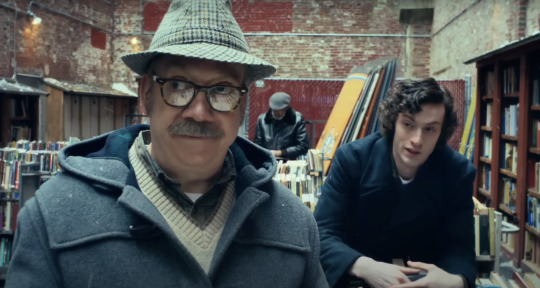
5 The Holdovers
Alexander Payne and Paul Giamatti make a film together for the first time since Sideways. The set-up: grouchy teacher at a boarding school has to spend Christmas looking after handful of boys whose parents are otherwise occupied. Payne’s stated aim is to make a film that’s not just set in the 1970s but could have been made then. I was pretty sceptical early on when it’s clear that the characters will end up learning something about life/people etc, but in the end, it’s consistently funny enough and sharp enough to overcome its sentimental tendencies.
Full review here

6 Poor Things
To me, there seem to have been three stages of Yorgos Lanthimos’ career: critically admired European art-house weirdo, European art-house weirdo making films in English with surprisingly big stars and finally European art-house weirdo making films people who don’t have a MUBI subscription have seen. Stage 3 arrived with The Favourite, which teamed him up with Emma Stone and Aussie playwright/screenwriter Tony McNamara. Those three are back together for Poor Things, an eccentric fable about a child-woman’s adventures and misadventures in Europe at the end of the 19th century.
In its world creation, Poor Things is reminiscent of the work of a pair of now unfashionable directors: Tim Burton and Terry Gilliam. (I mean, I’m not sure their style is out of favour so much as their behaviour – Gilliam – their associates’ behaviour – Burton – and how long it is since either made a properly good movie?*) it’s a gorgeous film – parts in black & white, parts in colour, both lovely to look at, at least when grotesque stuff isn’t happening on screen. The setting is gently steampunk and firmly art nouveau.
One of the things that makes this very different from a Burton film is the interest in politics – this is a movie with a good means -of-production joke. If you’ve seen McNamara’s consistently funny and smart TV series The Great, you’ll know how good he is at this stuff.
Something else The Great doesn’t stint on is sex but even that show feels comparatively tame compared to Poor Things. Put bluntly, film historians have been searching the grubbier corners of their minds to think of a movie in which a major female Hollywood star has as many sex scenes as Emma Stone does here. These are played for comedic effect – we’re not talking something comparable to Sharon Stone (no relation, to my knowledge) in Basic Instinct. But she does spend a lot of time undressed and engaged in what the character calls ‘furious jumping’.
It’s mannered, it’s weird but ultimately it’s really good. *I drafted this before Beetlejuice Beetlejuice, but I think the point stands.

7 Showing Up
Two things are happening in this film. We’re getting a tour of an arts & craft college in Portland, Oregon, seeing people allowed to be creative in what seems a happy and generally low-pressure, nurturing environment.
Within this groovy setting, though, Lizzy (Michelle Williams) is having a stressy week: she’s got a sculpture show coming up and hasn’t finished most of the works, her apartment doesn’t have hot water and her landlord/colleague/friend Jo (Hong Chau) says she’s too busy preparing for her own exhibitions to deal with it right now. And that’s just the start of what’s putting Lizzy on edge, although the rest another kind of person could have chosen not to get involved with.
Showing Up is the fourth film Williams has made with director Kelly Reichardt: it’s less traumatic than Wendy & Lucy and Meek’s Cutoff, and by contrast with Certain Women, it focuses on one character. All of Reichardt’s films are good (if you don’t mind a slow-moving movie), some are just more gentle on the viewer than others. I found Showing Up made me somewhat anxious but the backdrop is calming, and the cast is full of welcome (for me, anyway) presences: Andre Benjamin, Judd Hirsch, James LeGros, John Magaro (the husband in Past Lives). Like most Reichardt films, it’s stuck with me.

8 Drive-Away Dolls
You are duly warned: critical consensus is that this film is a stinker. The view of people I know whose opinions I respect is that this movie sucks. But I went to see it with a friend and we laughed steadily the whole way through, so here (unapologetically) it is.
As far as the filmmakers are concerned, the title of the movie is Drive-Away Dykes. Those filmmakers are Ethan Coen (ie, half of the Coen brothers) and his wife Tricia Cooke. I’m not big on the relevance of biographies of the folks behind films but here it’s probably worth mentioning that when Coen first asked Cooke out on a date she said something like ‘Dude, you know I’m gay, right?’
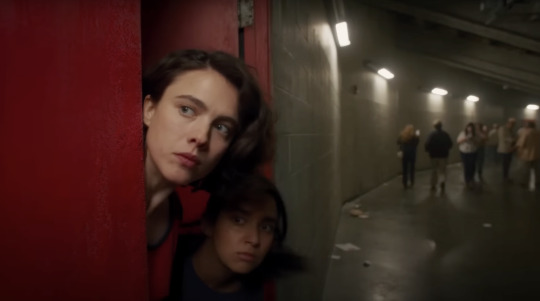
Drive-Away Dolls/Dykes is a trashy, silly, trippy, extremely dirty road comedy. Gleefully promiscuous Jamie (Margaret Qualley) and her uptight chum Marian (Geraldine Viswanathan) are doing that American thing where instead of renting a car, you drive one across the country to its new owner. But the car they were given has something mysterious in the trunk/boot and soon there are sadistic bad guys on their trail. Assorted improbable things happen, there are some great character actor bits and good cameos.
For context, I was always a fan of the Coens ‘ dafter movies: I love Burn After Reading and like Intolerable Cruelty. Maybe this one just caught me in the right mood. Or maybe everyone else is wrong. Probably not, but maybe…

9 All We Imagine As Light
Prabha (Kani Kusruti) and Anu (Divya Prabha) are flatmates and nurses at a Mumbai hospital. Prabha is the older, serious one, Anu more fun. We see them at work, Prabha helps a friend (Chhaya Kadam) who is fighting eviction from the place she’s lived for two decades and Anu goes on dates with her not-so-secret-secret boyfriend. And that’s pretty much it – this is a film mostly of small moments and strong atmosphere. I worried occasionally it was going to get tubthumpy but it stays smartly away from that, and ends up as a sweetly affecting work. (Worth clarifying that although this was made in India by an Indian director, it’s technically French-Belgian-Luxembourgian-Indian production, so a European arthouse flick rather than a product of Indian film industry.)

10 Babes
For about 10 minutes, I was sceptical that I was going to enjoy this film. It seemed to be assuming that you’d already bought into writer-star Ilana Glazer’s shtick and I hadn’t – Broad City just made me feel old and long stretches of characters just repeating the same word in different ways doesn’t automatically have me in stitches. But I hung in there, and it turns out that Glazer and director Pamela Adlon have created something funny and endearing here.
The elements: it’s like a romcom but about a friendship, it gives us the affluent New York-iness of When Harry Met Sally complete with typeface and score but also lots and lots of stuff about shit, piss and lactation, and the characters take shrooms, which maybe they didn’t in Nora Ephron scripts?
Eden (Glazer) and Dawn (Michelle Buteau) are lifelong besties. At the start of the film, Dawn is married and very pregnant with her second kid while Eden is single. Then she gets knocked up after a one-night stand and decides she wants the kid. Dawn promises to support Eden but that turns out to be not so easy when she’s struggling with two kids.
This just made me grin a lot…

11 Furiosa: A Mad Max Saga
Anya Taylor-Joy ≠ Charlize Theron much as Ewan bloody McGregor ≠ Alec Guinness. The story elements in this prequel are all pretty obvious and there’s noticeably more ropey CGI than in Fury Road. But that’s all ultimately of minor importance for two reasons.
The first is that the Mad Max world remains endlessly imitated but never remotely matched in its collection of strange inhabitants – so many movies and TV shows try to do this and become instantly exhausting*, but in George Miller’s saga they are vivid and fascinating.
The second is no one has ever made vehicle-under-attack sequences as thrilling as the ones in Fury Road and now in Furiosa. Whenever we’re racing across a scorched landscape in mutant trucks, cars and bikes, all is bliss.
*A rare exception is a terrific Korean film called The Good, The Bad & The Weird, which is so much better than the title suggests.

12 Hundreds Of Beavers
Truly like nothing else out there, Hundreds Of Beavers Is almost entirely dialogue-free (but emphatically not soundless), black & white and set in a partially animated landscape. The many animals are played by people in primary-school-level costumes.* The obvious reference points are silent comedy and Looney Tunes cartoons although I also thought of Benny Hill, Michel Gondry and Wallace and Gromit.
Our protagonist is an enthusiastic drinker trying to survive in somewhere in the snowy North American wilderness in the 18th or 19th century. His early attempts to hunt beavers, rabbits and fish are Elmer Fudd hapless. I was wondering how they would get a 1 hour 48 minute movie out of this, but a few more characters and bits of story are added although it remains pretty simple.
I think if you stumbled on this unknowingly, you might be baffled. But just the title is enough to alert most people that something weird is on the menu if not what flavour of weird. And for those in the right mindset, this will be a delight. *Probably the only way someone as sappy as I am could enjoy a film in which vast numbers of animals are killed.
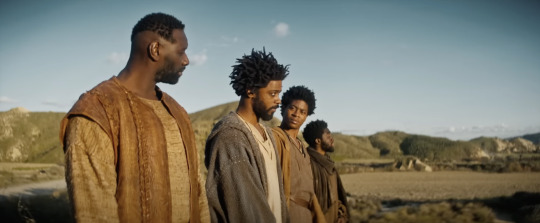
13 The Book Of Clarence
Would I claim that this is a film that works consistently? Very much not. It’s definitely hit-and-miss, but for me it hit more than it missed, and stuck with me after I’d seen it. I can see why it baffles people – it’s part stoner comedy, part anachronistic but sincere Biblical parable. So we’re in Jerusalem 33CE… but our main character, Clarence (LaKeith Stanfield) is a small-time pot dealer. Needing a rapid cash injection, Clarence grasps that the boom industry of the moment is religious sects and so sets himself up as a prophet.
I get that the first reference people are going to grab for is Life Of Brian. But I think director Jeymes Samuel’s view on all this is radically different from a bunch of hideously self-satisfied Oxbridge types (sorry, I have always loathed Monty Python). A lot (though not all) of the religious stuff is weirdly earnest – Samuel feels like he’s figuring stuff out rather than wanting to prove how clever he is.
But think what I really like about this film is its vibe – the look, the music, the costumes and the attitude Stanfield brings. As I said, it’s a bit of a mess, but it’s a mess that I ended up liking so much more than a lot of films that undoubtedly ‘objectively’ better.
Full review here
PS: I saw Wallace & Gromit: Vengeance Most Fowl on 2 January, so after I'd published this. If I'd seen it in time, it would definitely be somewhere in the top 10. The 2023 list
The 2022 list
The 2021 list
4 notes
·
View notes
Text
The big 2024 round-up: More or less mainstream
This is one of three parts of my look back at this year in movies, alongside The big 2024 round-up: Arthouse and documentary and my Films of the year.

Dune Part 2
I was surprised how much I liked the first instalment of the Lawrence Of Arabia-inspired space epic – with the effect that I approached Part 2 with much higher expectations. Which in many ways it met. My main issues: the way this very long film suddenly starts rushing towards the end, and I wasn’t sold on Austin Butler as the new bad guy. But in pretty much every other way, Denis Villeneuve, cast and crew have made exactly the movie they set out to make, and it’s impressive and sometimes thrilling.
More thoughts here

The Wild Robot
I'm strongly of the view that the machines are not our friends. This very pretty computer-animated movie argues maybe they could feel love, given the chance? It's the story of Roz (voiced by Lupita Nyong'o), an advanced domestic robot who is shipwrecked on an island with no people but plenty of animals. After a lot of misunderstanding with the inhabitants, she befriends an unpopular fox and has to adopt a gosling she's accidentally orphaned. As I feel I say often these days, the first half of the film is much better than the second, but it's sweet and looks great and is pretty endearing.

Challengers
I enjoyed Luca Guadagnino’s tennis movie – and it is a actual sports pic rather than the steamy drama that just happened to be set on the ATP circuit that many had assumed – while being fully conscious of its flaws. Zendaya, blonde bloke (Mike Faist) and bloke who looks like Jonathan Richman (Josh O’Connor) are tennis prodigies who fancy each other – but more than sex, this is about ambition and using other people as pawns to outwit fate. The bits where characters talk worked better for me than the ones where they don’t. One of several movies this year that really hinge on whether you like the ending.
Full review here
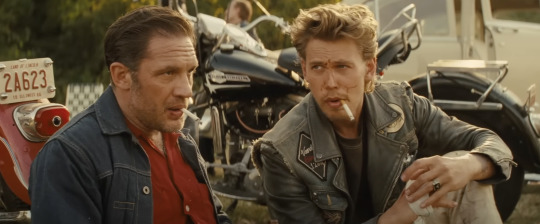
The Bikeriders
Who do you get to play strongly accented, authentic working-class Chicagoans? Why, south-west London child of privilege Tom Hardy and Liverpool’s Jodie Comer, of course. In fairness, I think Comer is excellent in this GoodFellas-esque tale of 1960s motorcycle club who kind of accidentally turn into a bike gang. For the first 20 minutes or so, it’s one of the best films of the year. As the story gets grimmer, it loses some momentum. Well worth seeing, though.
Full review here

Monkey Man
In which Dev Patel boldly reinvents himself as an action movie writer-star-director, in a film in which he both repeatedly gets the shit kicked out of him and kicks the shit out of a lot of other people. It’s set in India (although filmed in Indonesia), there’s some good atmosphere stuff and a couple of great action set pieces. Unfortunately, it also seems to want to say SOME BIG IMPORTANT STUFF about India and religion and politics and corruption and marginalised communities that Patel (who, it should be noted, comes from Harrow) is completely out of his depth with.

The Iron Claw
Brutally depressing based-on-a-true-story wrestling drama. Basically, a classic horrible ex-wrestlers bullies his sons into attempting to do whatever it was that he never managed to do (it's a lot like the story of the Beach Boys, only with people chucking each out of a ring). It goes well occasionally, but he’s a monster and they all suffer and eventually… yeah. Means something to wrestling folk, I guess. People were impressed by how Zac Efron, Jeremy Allen White and Harris Dickinson managed to turn themselves into reasonable approximations of 1970s grapplers. It’s all competently made and acted and so on, but I don’t get the point of this kind of sadistic misery fest.

Snack Shack
This starts off as a hyperactive retro teen comedy – it’s hard to follow what the characters are gabbling about in the first few scenes – but eventually switches gears, how successfully I’m not so sure. Our protagonists are a pair of super-precocious, entrepreneurial 14-year-olds looking for lucrative ways to spend the summer before high school. They end up in charge of the snack kiosk at the local pool and meanwhile, they’re both drawn to the slightly older army-brat girl who is only in town for a couple of months. The year, by the way, is a thankfully pre-web pre-mobile 1991.
I’d heard really good things about this one, and it nails the vibe of the time and place, and the three leads (Conor Sherry, Gabriel LaBelle, Mika Abdalla) are well cast. But I didn’t like the two dudes much and I think we’re meant to be somewhat rooting for them. And it kept reminding me of far, far better movies: Dazed And Confused, The Myth Of The American Sleepover, Licorice Pizza…

The Fall Guy
Did I enjoy this? I certainly did. Am I aware of its flaws? I undoubtedly am. Quite why it needed to use a title and some character names from the early 1980 Lee Majors TV show that only a few of us remember is somewhat inexplicable. They could have simply started from scratch with the idea of a stunt man who investigates a crime. I think Emily Blunt and Ryan Gosling are charming together, vital in a film that’s as much romcom as action movie if not more. I was less sold on it as a showcase for the art of stunts – it’s not well-shot enough to convey what we’re meant to be seeing. And the plot is super-flimsy. But the funny bits, for me, outweigh the ropier stuff.

Twisters
Idealistic grad student Kate (Daisy Edgar-Jones) goes storm chasing with experimental tornado-busting chemicals, it goes horribly wrong, cut to a few years later and one of her old chums (Anthony Ramos) tempts her back into the game. On the tornado circuit (which is a thing, this film would have you believe), they clash with a group of noisy YouTubers led by Tyler (Glen Powell). With the characters, we drive trucks into the path of various tornadoes, we’re asked to rethink Kate’s/our first impressions of some of the characters and it’s all leading up to a mega-storm climax. I think that’s about it?
Twisters is a film that knows exactly what it is and delivers pretty solidly. Somewhat depends on just how charming you find Powell, meanwhile I found Edgar-Jones a lot more tolerable than I expected.

Le Comte De Monte Cristo
The folks who brought us the recent two-part Three Musketeers are back with Dumas’ other most famous work. It has similar features: they’re taking it seriously, using tangibly there historical buildings, it’s in French… I’m instinctively treating these as assets for the movie and yet I fell in love with the story as a kid watching the 1934 Hollywood version.
As with Les Trois Mousquetaires, French + location shooting doesn’t mean more faithful adaptation of the book. The emphasis here is on how cruel the drive for vengeance makes Edmond Dantes, something occasionally overstressed in the dialogue here when it is already clear from the action.
Still, there’s a good reason this has been endlessly adapted – it almost always works (although I advise avoiding the 1975 Richard Chamberlain one), and this is more than decent.

Beetlejuice Beetlejuice A.D. 2024
Tim Burton’s very belated sequel is a movie of excellent bits and dud spaces in between. The biggest nostalgia hit for me was actually the opening credits, triggering not just memories of the original but a whole comedy-horror era including other Burton films alongside Men In Black, Peter Jackson’s The Frighteners….
Anyway, Winona Ryder’s Lydia is now a telly medium, her daughter (Jenna Ortega, very much the Ryder/Ricci heir) doesn’t like her and her boyfriend is her dodgy producer (Justin Theroux). With her stepmom (Catherine O’Hara), they all end up back at the house from the original movie and there inevitably summon Beetlejuice (Michael Keaton.)
The better parts of the movie happen in the place where the newly dead are being processed – the design is great and reminiscent of early Burton films.
The consensus – which I agree with – is that the movie is overstuffed with characters and inconsequential story. Plus, I think it suffers from the lack of less-eccentric characters along the lines of the ones played by Geena Davis and Alec Baldwin in the original. (I also find Ryder’s brittleness hard work.)
But if you liked Burton and have understandably stepped away, this is worth nipping back for as long as you have modest expectations.
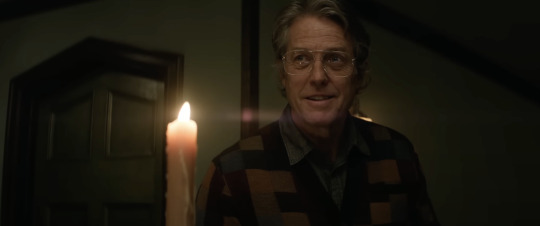
Heretic
Imagine Aaron Sorkin wrote a horror movie – it wouldn’t exactly like this but it might be similar. The set-up: two young women (Sophie Thatcher and Chloe East) doing their Mormon missionary duties arrive at a rather Grimm’s Fairytales-like isolated cottage and are welcomed in from the storm by the owner (Hugh Grant), who is suspiciously eager to discuss questions of faith. Run! Run! But, of course, they don’t.
This is a very, very talky film. Grant’s character is one of those guys (yes, I relate) with too much time to ferment his theories, now seizing his chance to inflict them on an initially willing audience.
That will be maybe an overdose of words for many horror heads. And then when the film does switch in thrills-and-scares mode, it feels a bit second-hand and underwhelming.
But if you do like horror with a theological slant and/or are enjoying Hugh Grant’s bad guy years, there’s fun to be had.
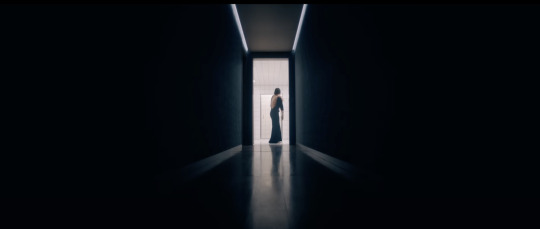
The Substance
First, a fair question various people have asked in response to critics blithely referring to this as ‘body horror’ – what do they mean? Like The Fly, is probably the simplest answer. This has no jump scares and the violence happens in one relatively short burst but there’s lots and lots of gross stuff happening to human bodies, including deformities and entrails. Hope that clarifies things.
The Substance has a point it wants to make about the entertainment industry’s disgust at aging female bodies. It has a distinct look, with lots of strong colours, sometimes contrasting with very white rooms, long corridors… The vibe feels 1970s although it is set now. And it has Demi Moore, in the What Ever Happened To Baby Jane? and Sunset Boulevard tradition of once-huge stars making films about women showbiz no longer has a place for.
If you’re the kind of person who likes a film that is focused on its theme, then you might dig The Substance. I liked the design but that was about it. The film is an unjustifiable 2 hours 20 – it’s said most of what it’s usefully going to say in the first 40. It’s a satire but it’s not funny. I guess Moore is fine but it’s a big waste of Margaret Qualley and the only other actor with anything to do is Dennis Quaid, basically as the evils of TV personified. Not keen. (MUBI)

Inside Out 2
The biggest hit of the year – and yet somehow a bit under the radar? The follow-up to many mental health professionals’ favourite Pixar movie picks up with Riley hitting puberty and some new emotions staging a coup in her control room. The awkward business of romance is avoided (this is still a kids pic) – instead the external part of the plot hinges on (ice) hockey camp and the potential to climb the teenage social ladder by dumping your old friends for potential cooler ones. Meanwhile the internal plot has Joy, Anger etc as exiles in the far reaches of Riley’s mind. Almost inevitably not as good as the original but still quite traumatising at moments.
(Disney+)
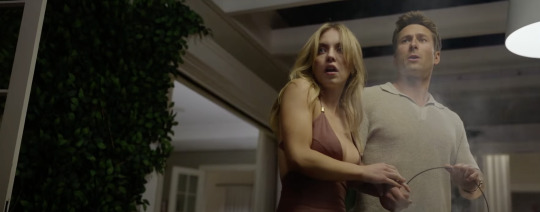
Anyone But You
This is technically a 2023 release but snuck out right at the end of the year. It was initially thought of as a flop but then did the now-rare thing of picking up steam at the box office as the weeks went by, and I became a bit fascinated with it as passed $50 million… $100 million… $200 million! on a $25 million budget, prompting thinkpieces about whether the romcom was back and whether Glen Powell and Sydney Sweeney were now A-list stars.
Through all of this, I hadn’t actually seen the movie. I was just enjoying it as a business story. Then eventually I saw it and… yeah, it’s not very good. The plot is Shakespeare-derived and maybe that’s part of the problem, it’s got that exhausting romcom thing of characters doing a bunch of random stuff because the film can’t have them get together yet. There’s also a tiresome raunchiness that feels forced.

Maxxxine
I did something maybe a little odd, seeing this without having watched the two previous director Ti West + star Mia Goth horror movies – X, to which this is a direct sequel, and Pearl, a 60-years-earlier prequel. But neither of those seemed that appealing, while Maxxxine’s promise of a recreation of scuzzy ‘80s LA plus some Hollywood satire seemed more my bag.
And the look, the apartments, and particularly the video store, deliver. The soundtrack goes a bit too obvious. There are scenery-chewing opportunities gleefully seized by Kevin Bacon, Giancarlo Esposito and Bobby Carnevale. Elizabeth Debicki also gets some speeches about the horror-director-as-artist that you could maybe take as satire but I suspect are West’s own views.
Pretty cool.

Conclave
Handsomely mounted – so much scarlet! – political almost thriller. The pope has died and Cardinal Lawrence (Ralph Fiennes) is in charge of the election of his successor. He’s in a unique position: he’s in charge of procedure but also a voter and an active member of one of the factions, the cardinals are sequestered and he alone gets news from the outside world. So he’s our point-of-view character.
The early front runners are a charming American liberal (Stanley Tucci), a charismatic Nigerian representing the less developed world (Lucian Msamati), an outspoken Italian reactionary (a barnstorming Sergio Castellitto) and a smarmy American centrist (John Lithgow), but we know from real life that papal elections can have twists.
By nature of the story, we’re mostly spending time with a bunch of not-young men. The film, adapted from a novel by Robert Harris, puts us in the liberal camp and seems pretty undisguised in its sympathies. Stylistically, the film harks back to a time when guys-in-a-room talking equalled mainstream entertainment – Twelve Angry Men but slightly more recently the John Grisham era of 1990s – but it’s careful to be current with its ideas.
A film made in Italy by German director Edward Berger with an international cast could seem a bit worrying but Conclave is what it promises: a well-crafted, well-acted middlebrow movie.

Juror #2
So I’d mentioned Twelve Angry Men and John Grisham in my Conclave mini-review and then I saw Clint Eastwood’s new film, which for stretches is fully in tribute mode to Sidney Lumet’s classic while being set, Grisham-like, in the south. There’s something satisfyingly familiar about so much of this film, with the hook being that Juror #2 (Nicholas Hoult) realises he was present in the build up to the crime… and maybe more than that? You get Toni Collette as the politically ambitious prosecutor and JK Simmons as a retired cop who has somehow snuck onto the jury. It’s a solid piece of work from 94(!)-year-old Clint, only slightly weakened by the miscasting of Hoult as a journalist working hard to stay sober.

Emilia Perez
This is a film in which there is a scene that contains a character doing the Carrie Bradshaw thing of narrating what she’s typing while the camera zooms in on the words – and, at the same time, there’s Les Mis-flavour singing -on-the-march going on. This is a film that would like you to think it has something to say about Mexico’s troubles that was filmed in Paris, written and directed by French people and whose third lead (playing a Mexican) is an American pop star whose Spanish is audibly non-native. In other words, sometimes a film is just so far from what you like, it feels unfair to judge it.
In case you don’t know. Emilia Perez is a a musical directed by Jacques Audiard about a Mexican cartel boss (Karla Sofía Gascón) who transitions to a woman and maybe a better person. Gascón is good in places, people have raved about Zoe Saldaña in this film but I don’t get it and I don’t blame Selena Gomez, I blame the people who cast her. (Netflix)
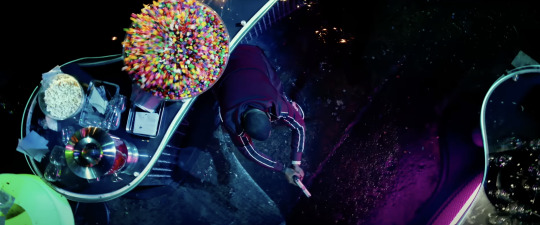
Bad Boys: Ride Or Die
I was very pleasantly wrongfooted by 2020’s Bad Boys For Life, which was way better than a legacy sequel to a pair of noisy ‘90s action comedies should be. The downside of that is I approached this one with unreasonable expectations.
The attempt at freshening things up is that Will Smith’s Mike, usually the cocky one, is now anxious, while Martin Lawrence’s Marcus feels invincible after a near-death experience, so the balance of their partnership/friendship is flipped, or at least that’s the idea.
If you’ve seen any of the previous films, you know what to expect. There are gags, explosions, fast cars etc. it’s fine but it’s absolutely never surprising.
0 notes
Text
The big 2024 round-up: Arthouse and documentary
This is one of three parts of my look back at this year in movies, alongside The big 2024 round-up: More or less mainstream and my Films of the year.

The Zone Of Interest
As a rule, I like to know as little as reasonably possible about a film before I see it. But in order to consider seeing The Zone Of Interest, I needed to know at least something about it – I’m not enamoured of the depths of human suffering as a source of entertainment and I don’t go to the movies for lessons, mostly. But the drawback of seeing Jonathan Glazer’s the-family-life-of-a-concentration-camp-commandant film after hearing a lot about it was that rather being surprised by how radical it was in terms of not doing what cinematic accounts of the Holocaust normally do, I found it fairly conventional compared with what I had built up in my imagination. It’s smart, it’s startling at moments, it’s an interesting take on the subject… and it’s still not the kind of thing that I want to go to the cinema for. I was impressed but not moved.

Perfect Days
Confession: there’s a fair chance if Perfect Days was exactly the same film but had been made by a Japanese director, it would be one of my favourite films of the year. But it was made by Wim Wenders and Wenders is a notorious cultural tourist and so I’m just that bit distrustful about what he’s saying here about Japan.
Probably unfairly – this is a lovely film. It’s about Hirayama (Koji Yakusho), who takes immense pride in his job of cleaning public toilets. Not grim municipal conveniences like you’d find in London – these are a range of outstanding bits of architecture and technology (although you’d never get me to use the glass-cube ones that switch to obscured windows when you step inside).
Hirayama reads, listens to Lou Reed and Patti Smith on original cassettes in his little van, takes photos on film, looks after his many plants. He’s all routine but it doesn’t seem boring. He’s just the coolest and the film is begging the ignorant Western critic to misuse the word ‘Zen’. So, so much better than I would ever have expected a Wenders film to be at this point in history.
(MUBI)

Love Lies Bleeding
The first half of 2024 seemed to offer a clear choice for anyone interested in a sapphic crime movie that wasn’t shy about sex: if you wanted goofy, you could go for Drive-Away Dolls. And if you wanted gritty, there was Love Lies Bleeding. Only, well, LLB turns out to be surprisingly goofy, too, although (as the title promises) bloody.
It’s 1989 and Lou (Kristen Stewart) is stuck in a dusty small town working in a gym when the strapping Jackie (Katy O’Brian) pops in to lift some weights. Very, very quickly Lou is cooking Jackie breakfast and agreeing to let this drifter who is en route to (of course) Vegas stay.
There’s a strong 1990s neo-noir vibe here – the lesbian thing has had people mentioning Bound but it's much closer to John Dahl, particularly Red Rock West.
But (and this was the surprise), it gets very heightened, so yes David Lynch but also Sin City and (it turns out this was one of director Rose Glass’ main reference points) Showgirls. And that leaves Stewart feeling a bit out of sync with her castmates through no fault of hers because her character is fairly grounded and everyone else’s (O’Brian, Ed Harris, Dave Franco etc) are not.
And in the end, it’s a little unclear about how much we’re meant to be laughing and that left me not fully sold on the movie.

La Chimera
When you think of Italy, is it grubby and cold? Chances are, probably not, although it can certainly be both. La Chimera leans heavily into showing us uncomfortable, crumbling places. The film is about a bunch of youngish folk who scratch a living through illegal archaeology – they are tomb raiders without the adventure that might imply. Their erstwhile leader, fresh back from prison, is a lanky Englishman played by the currently modish Josh O’Connor. The film is light on plot, focusing more on the dysfunctional little gang. I wasn’t annoyed that I saw La Chimera but not sure I actively enjoyed it.

Kinds Of Kindness
The year’s second Yorgos Lanthimos film is an anthology movie – a form that seems more popular with directors than audiences. The achingly ironically named Kinds Of Kindness is a three-parter with the same cast playing different characters each time. We’re talking dark modern fables – I was going to say ‘dark little…’ but as the whole thing comes in at a podgy 2hrs 44mins, each episode is long enough. It’s proudly nasty and aggressively pervy. I can’t fault the cast – Jesse Plemons, Emma Stone, Willem Dafoe, Hong Chau and Margaret Qualley – but it felt a bit smug, gratuitous and a bit trite to me (not to mention mad long.)

Janet Planet
Quiet, low-key US indie about Lacy (Zoe Ziegler), a kid who says she has no friends and her chronically unlucky-in-love single mom Janet (Julianne Nicholson). They live in a beautiful (so beautiful) house in the woods (this seems to be the early ’90s, so property is more affordable – but also, it seems, Janet comes from means). It looks great, there are some excellent sequences, Nicholson is reliably good but it didn’t fully hit with me – usually (though not always) I need this stuff to be funnier. (Director Annie Baker, by the way, is married to Nico Baumbach and by extension part of the Baumbach-Gerwig power axis.)

La Cocina
Arnold Wesker’s 1957 play The Kitchen updated and relocated to a Times Square tourist trap. Lots to admire technically: lush black & white, great choreography of swarms of staff moving in and out of the kitchen, overlapping dialogue in a half dozen languages… But it’s all heavy-handed and wearying – everything stopping so characters can give speeches about their dreams plus a lot of obvious stuff about how much it sucks to be an undocumented worker in a frantic restaurant.
Full review here

Priscilla
Sofia Coppola tells the unsettling story of Elvis’ child bride. Plus points: Cailee Spaeny in the lead role, even if it’s somewhat disturbing how plausible she is when she’s playing a teen (Spaeny is 25.) A phenomenal soundtrack makes light of not having the rights to the King’s music and instead goes from The Ramones to Dolly Parton. Minus points: Aussie Jacob Elordi seems to have put in so much effort getting Elvis’ voice right that he’s too exhausted to do anything else. And about three-quarters of the way in, it slides into conventional biopic territory. Could have done with a 15-minute trim. It’s good, but my expectations were a bit too high.
(MUBI)
Full review here

Problemista
Not the only new film I saw this year that reminded me of the work of Michel Gondry, this is a charming comedy written & directed by/starring Julio Torres as a wannabe toy designer who needs a job, any job, to keep him in the US. He ends up working for the eccentric Elizabeth (Tilda Swinton in a long, curly red wig), whose artist husband (Rza) has been cryogenically frozen. I can imagine that Torres’ manboy shtick and the lot-of-stuff-made-of-cardboard look of the film will put some people off, but I found lots to enjoy here.

All Of Us Strangers
Critics loved this, various people I know found it fully tear-inducing. As with Aftersun last year, I ended up feeling a bit heartless.
This is a ghost story that’s about emotions not scares. Andrew Scott plays a screenwriter living in a near-empty new luxury high-rise in London. Two things start happening: he’s hooking up with his warm-but-damaged neighbour (Paul Mescal) and he’s taking the train down to Surrey to visit his long-dead parents (Claire Foy and Jaime Bell), Spending time with his folks (no explanation is given for how, a good decision), he gets to understand a bit more about his childhood and process being a gay kid in the 1980s, when on the one hand there was no shortage of representation in the pop charts – Frankie Goes To Hollywood’s Power Of Love is central to this film – but the suburban world was extremely hostile and harmful.
The performances are all terrific – and previously I had been somewhat sceptical about both Foy and Mescal. The scenes with the parents are all pretty excellent. The vibe in the Scott-Mescal scenes is also good. My problem – which predates this film – is with director Andrew Haigh’s writing: I find a lot of his dialogue so plodding it takes me out of the situation entirely. And that’s why I was left feeling this is a film of great moments rather than one that fully worked for me, but I'm in the minority.

Evil Does Not Exist
This is the newest film by Ryusuke Hamaguchi, who made the 2022 critics’ fave Drive My Car. This one is set in a village up in wooded hills, where everyone is obsessed with things like the taste of noodles cooked in pure mountain stream water. (If you are fully spoiler adverse, stop reading now.)
The plot – such that there is – is nudged into motion when a Tokyo talent agency decides to grab a post-Covid subsidy by reinventing itself as a glamping operation. A big chunk of the film is taken up with the fractious public consultation the company has to hold.
The vibe is something like a Japanese version of a Kelly Reichardt film. Until the final 10 minutes or so, that is, when, in its own quiet way, it goes absolutely batshit. And lost me completely.
(BFIplayer)

Monster
The great Japanese director Hirokazu Koreeda is back on home soil after French and Korean excursions with a film about a troubled schoolkid. Someone is being bullied but whether Minato (Soya Kurokawa) is perpetrator, victim or something else is the question. This is one of those films in which we see the same stretch of time from three different perspectives in turn. Unfortunately for how I felt at the end of watching it, the segment I thought was truly outstanding was the first one, about a feisty single mother (Sakura Andô) taking on school officials who behave in a way that if a non-Japanese director had made this, they might be accused of overdoing the stereotypes of groupthink and oppressive politeness.
The rest of the film is thoughtful and well filmed and objectively good but I just felt the energy dip and my interest fade, to the point where I was thinking fondly of other Koreeda movies. Mind you, one of those was last year’s Broker, which I now don’t understand why I left off my favourites of 2023 list, so ask me in 12 months and I might be raving about Monster.
(BFIplayer)

His Three Daughters
This is one of those films you’d swear blind was adapted from a play but weirdly seems to have been written for the screen. I mean, there’s a core cast of three with maybe five other speaking parts. It takes place almost entirely within a New York apartment with a few scenes on a bench in the building’s grounds, and precisely one trip out to a cannabis dispensary. And it has the rhythm of theatre. But it’s a movie, shot on film even.
Vincent is dying. His daughter Rachel (Natasha Lyonne) shares the apartment with him. Her sister Christina (Elizabeth Olsen) has flown in across country. Katie (Carrie Coon) only lives in Brooklyn but apparently the end is so near that she’s also sleeping there. There’s an annoying guy from the local hospice who drops in with advice, and a nurse.
The film broadly matches my experience of this kind of situation, which is you know you should be on your best behaviour and supportive of everyone else because they are also in pain but you’re exhausted and overwhelmed and just so unbearably angry.
So rather than being there for each other, Katie – who thinks of herself as the grown-up one – snipes at weed-smoking self-proclaimed professional gambler Rachel, who she clearly thinks of as a fuck-up. Meanwhile, neither of them are paying much attention to Christina, whose assigned family role is the happy one.
This is very much an acting showcase, although one that leans into known strengths. In other words, it’s Natasha Lyonne playing the streetwise one and Carrie Coon the seemingly together one – none of them are out of their comfort zones.
Obviously, the subject matter is grim, but I found it grim-relatable rather than grim-as-spectacle. Pretty good. (Netflix)

I Saw The TV Glow
Great title, great look, great vibe… There’s much to like about the first half or so of this hard-to-pigeonhole movie, one that sits somewhere between, I don’t know, David Lynch and Michel Gondry, plus a little bit It Follows and I was also reminded of Boots Riley’s TV show I’m A Virgo. Maybe it would simpler to say that Jane Schoenbrun has created something all of its own here. What it isn’t in any normal sense of the term is a horror movie – there are quite a few disgruntled viewers who thought they were going to get scares and maybe gore and got neither.
It’s about a pair of marginalised teens in the 1990s who are obsessed by a cult TV show that’s part Buffy and part one of those low-budget 1980s kid’s fantasy shows with rudimentary special effects.
The cinematography, production design, lighting are as good as anything I’ve seen this year. But in the second half, the storytelling feels a bit clunky to me, and the conclusion a bit forced. I had huge expectations for I Saw The TV Glow, and it fell a little short. But it's one of the most distinctive and memorable things I saw this year.
Documentaries

Brats
Has Andrew McCarthy got over the sense that he and his co-stars from the John Hughes movies plus St Elmo’s Fire were considered spoilt party kids? According to this documentary he directed, the answer is no. The shtick is that he rings up Emilio, Demi, Rob, Molly, Judd and Ally* and asks them to talk it through almost 40 years later – but which of them will say yes? Fortunately, he also talks to journalists and behind-the-scenes people and gets a bit more perspective. Not flattering to its maker but I was hooked.
*If you can’t automatically add the surnames, this isn’t for you.
(Disney+)
Full review here

Catching Fire: The Anita Pallenberg Story
There’s maybe a bit of a Trojan horse effect going on with this documentary: draw folks in with gossip from the set of Performance and hope they stay for the deeply sobering stuff about how wholly unfit to be parents Keef Richards & chums were. The moral of story: keep clear of rock stars.
Full review here

Getting It All Back: The Story of Cymande
Full disclosure – the director of photography on this film is a friend of mine (hi, David!). This is a documentary about Cymande, a classic obscure-at-the-time, later massively influential band. There weren’t a lot of successful black bands of any kind in London in the 1970s, let alone funk groups that drew from Rastafarian drumming and chanting as well as jazz and soul.
The documentary tells the story of both Cymande’s original career – no love here, some in the States – and then the repeated way that subsequent generations continuously ‘rediscover’ and sometimes sample them. We get Mark Ronson and Jazzie B and Maseo from De La Soul and Norman Jay and the bloke from beardy American rockers My Morning Jacket…

It’s a good story and Cymande are an interesting lot, although there’s a always an implication in these kind of docs that with just a little luck, the subjects would have been huge and I’m not sure here that’s necessarily the case. (Or maybe I think that, because, whisper it, Cymande aren’t really my bag – like a lot of ‘70s bands, I like the samples grabbed from their records but not the records themselves.)

Scala!!! or, The Incredibly Strange Rise and Fall of the World's Wildest Cinema and How It Influenced a Mixed-up Generation of Weirdos and Misfits
I mean, that subtitle does a lot of the work there. The Scala was a cinema club, first in Fitzrovia and then in an amazing building in King’s Cross, that existed from the late 1970s until the early 1990s. The KX building, now a club/gig venue, is still called The Scala and it’s where the interviews for this documentary were shot.
Because The Scala was notionally a private members’ club and not a general admission cinema, they got away with showing all sorts extreme horror and beyond X-rated films you couldn’t possibly see elsewhere, plus just lots of assorted culty stuff. They ran all-nighters, hosted assorted obsessive fan groups etc. It was, by all accounts, quite something. (I think I only went once, and just to see a film that was on current release, so didn’t get the full experience.)
This documentary tells all that story well enough, but I got tired of lots of people telling us how cool it was and therefore how cool they were for hanging out there. And how it was somehow politically important (I don’t think so). When they are going, ‘It was so daring, people were having sex in the loos,’ I’m afraid I’m just thinking, ‘Christ, you’re at an all-night quadruple bill and you’re busting for a piss and two selfish bastards are going at… Nightmare.’ (BFIplayer)

Made In England: The Films Of Powell And Pressburger
In which cinema’s no1 superfan Martin Scorsese talks us through the work of arguably the greatest British-based filmmakers, interwoven with his memories of seeing these movies, how they influenced key sequences from his movies and the story of how Marty and chums rescued Michael Powell from chilly obscurity in the English countryside and whisked him off to be their guru (culminating in Scorsese’s editor Thelma Schoonmaker marrying him). Scorsese is the only 2024 voice we here, everything else is archive footage and generous clips from the films – this is a luxury version of the kind of video essay you get on YouTube, but then Scorsese did help invent the idea in the first place. If you haven’t seen all of Powell and Pressburger’s masterpieces (A Matter Of Life And Death, The Red Shoes, Black Narcissus), I’d skip this for now because there are massive spoilers.
*Emeric Pressburger came from Hungary + Hitchcock did the bulk of his best work in Hollywood
(BBC iPlayer)

Piece By Piece
Essentially all you need to know is this: Piece By Piece is an otherwise standard documentary about the life and career of Pharrell Williams except in Lego computer animation. So if you are tickled by the idea of, say, the video for Snoop Dogg’s Drop It Like It’s Hot rendered in (CG) Lego, you might want to see this. If not, walk on by.
Full review here
1 note
·
View note
Text
Assorted thoughts about Dune: Part Two

1. Because I know the grand sum of nowt about Frank Herbert’s Dune – other than having seen 2021’s Dune – I assumed that the very clear debt in this movie to the story of TE Lawrence was a purely cinematic one to David Lean’s Lawrence Of Arabia. Apparently, though, Lawrence’s memoir Seven Pillars Of Wisdom was a book that Herbert read in preparation for writing his fat sci-fi series and the echoes of it – via Lean’s film – are extremely present in Dune 2. (Along with the also LoA-indebted Star Wars and maybe a bit of Kurosawa.)
2. It’s the desert stuff – the Lawrence and the Arabs stuff – that for me works best about Dune 2. It’s strong and clear – as well as better designed and filmed than any mainstream sci-fi film I’ve seen in a long age. Obviously, there’s a ton of CGI here, but a) there are a lot of actual places we’re seeing, b) the design is excellent and c) mostly the effects stay within the limits of what they can actually do, barring a couple of ropey crowd scenes.

3. One of the surprises people had with the first movie was that Zendaya – who was heavily featured in the publicity – got a handful of minutes. That’s not the case in Part 2 – she’s very much the second lead, and from one point of view, the conscience of the movie. At least, if you are inherently suspicious of aristocrats, white saviours, religious extremists and scheming shadowy figures who exploit them. But while Zendaya’s character Chani is a clear-headed non-believer, the film – like many movies of this kind – seems to be telling us that prophecy and destiny and weird powers are real. So… hmmm?
4. It just occurred to me that Paul in Dune is like Scott Pilgrim in that he meets literally the girl of his dreams.

5. Right, then, we’ve got Zendaya, and Javier Bardem-channeling-Anthony Quinn, and Hollywood’s fave emo Timothée Chalamet as the posh kid trying to resist the fate his spooky mum (Rebecca Ferguson) is pushing him towards. We’ve got desert guerrilla warfare and we’ve got surfing on giant sandworms. This is all excellent, really excellent. However…
6. If you strayed across talkshows or their YouTube equivalents in spring 2024, you’ll have seen a quartet promoting this film: Timmy, Zendaya, Florence Pugh and Austin Butler. That might suggest that all four had similar weight in the movie, but it’s definitely the Z&T show. The Pugh and Butler bits work less well for me. I don’t feel that Butler gets much traction as the new villain, maybe in part because the film is a 12A UK/PG-13 in the US, so while he does a bit of casual murder, the film doesn’t linger on it. We’re more told than shown how unhinged he is. I quite enjoyed Pugh’s chats with Christopher Walken as her dad the emperor, but, in general, the non-desert stuff all seemed a bit perfunctory and mechanical to me, apart from Léa Seydoux’s brief but rewarding turn as a slinky spy.

7. While I’m glad the film isn’t any longer than it is, Dune Part 2 does seem to end in a bit of rush – suddenly, after a patient first hour and a half, everything is happening. A certain amount of plot information seems to have got lost in the dash for the line, but more importantly, it makes the end feel kind of diminished to me.
8. The consensus is that Dune 2 is better than Dune. This is hard for me to judge because when I saw the first instalment, I had low expectations. I’m not generally a sci-fi saga kind of person so I held off on watching the film until not long before the second one came out and then was pleasantly surprised by how much it worked for me, all things considered. So now I have to compare Dune (minimal expectations) with Dune 2 (relatively high expectations based on the fact that I like the first one) and that makes things skewed. But I think Dune 2 is – structural flaws above noted – pretty exemplary for what it is.
1 note
·
View note
Text
Piece By Piece

Director Morgan Neville Stars Pharrell Williams, Chad Hugo USA 2024 Language English 1hr 33mins Colour
Brilliant gimmick adds magic to otherwise standard pop doc
Quick two-part question:
a) Do you find the idea of Missy Elliott or Snoop Dogg rendered in Lego computer animation inherently delightful?
b) Are you reasonably tolerant of documentaries about musicians?
If you answered yes to both, you might be the audience for this film.

According to Piece By Piece itself, director Morgan Neville had pitched a standard doc, and it was Pharrell who suggested the story would be best told using Lego, or rather the computer animated version of it.
And certainly, if this had been filmed in a trad manner, I wouldn’t have bothered seeing it. There’s nothing that compelling about the history of Pharrell’s life and work… But make these Lego characters and suddenly, it’s all massively cute and, just as importantly, the film is free to recreate the memories that Pharrell, his friends and collaborators are sharing.
Which means we can watch a Stevie Wonder record trigger Pharrell’s synaesthesia or a marching band entering the high school canteen. And that during the inevitably duller chunk after Pharrell has made it big, at least we get famous videos recreated in Lego-style and that’s usually fun.*

As with any authorised story, some people or events are noticeably absent. One is Kelis – her debut album was a big moment for The Neptunes (the production duo of Pharrell and Chad Hugo). They had worked on some high-profile singles but this was a whole, very distinctive LP. Turns out Kelis accused Pharrell of the classic shady music biz of adding his name to the credits of songs he didn’t write. So that explains her absence from the film.

Then there’s the question of at what point Pharrell became the headline act. Because all the famous production work – Britney’s I’m A Slave 4 U, Snoop’s Drop It Like It’s Hot, the Jay-Z stuff, the Justin Timberlake stuff – is credited to The Neptunes. And when they put out their own music, it was as N.E.R.D. Even Pharrell’s first solo single – Frontin’ – came from an album billed as The Neptunes Present…
But because Pharrell sang falsetto hooks on a lot of those productions, he happened to be/got himself prominently featured in the videos while Chad stuck to a more traditional back-room role. And so a lot of the artists interviewed here talk about working with Pharrell, rather than The Neptunes. We don’t hear Chad’s thoughts on that – but presumably after his interviews for Piece By Piece were done, he sued Pharrell, accusing him of making a trademark grab.

So the new music for the film is unadulterated Pharrell and it’s really not good. Charitably you might say occasionally it leans towards Todd Rundgren but more often it’s Elton John at his gloopiest.
But the basic conceit of the film – showing us a childhood in a seaside city and then the hip-hop/r’n’b world of the 1990s/2000s as it would have looked in Lego – remains a winner, especially when it’s at its most Legoish, eg, the way waves washing in and out on the beach are depicted. And, yes, that’s rather delightful.
*Although not as fun as watching bands performing recreated with actual Lego?
0 notes
Text
Irma La Douce

Director Billy Wilder Stars Shirley MacLaine, Jack Lemmon, Lou Jacobi USA 1963 Language English 2hr 27mins Colour
Based on a musical, stars Shirley MacLaine but bafflingly not a musical?
‘…that film with Shirley MacLaine and Jack Lemmon…’
‘The Apartment!’
‘No, not The Apartment.’
‘Not The Apartment?’
‘The other one…’
In 1959 and 1960, star Jack Lemmon, director Billy Wilder and his co-writer IAL Diamond had managed one of the mightiest one-two punches in movie history: Some Like It Hot (43 on Sight And Sound’s greatest films ever) was followed by The Apartment (141, should be much higher), for which they were joined by Shirley MacLaine. Both classified as comedies, but two very different movies: one dizzying, the other tremendous but undeniably bleak.
Wilder’s next film was a broad Cold War satire titled One, Two, Three, which has its moments. Then he and Diamond reunited with Lemmon and MacLaine for Irma La Douce. It’s based on a French musical – but (despite the presence of MacLaine) has no singing.

Nestor (Lemmon) is an idealistic young cop who has just been reassigned to Les Halles, the great wholesale food market in Paris, near which there’s a street with a large collection of what the film calls street walkers and we’d now call sex workers. One of the most popular of these is Irma La Douce (MacLaine). In very short order, Nestor is booted out of the force for being over-diligent, Nestor and Irma fall for each other and Nestor becomes Irma’s pimp (or mec, as the film prefers, maybe hoping that would keep the censors off its back).

But Nestor’s not the kind of guy who wants his girl having sex with other guys, while she doesn’t want to give up a job she’s very good at. So – this being that kind of comedy – Nestor comes up with an elaborate plan to keep them both happy…
Probably the first thing I should say is that Irma La Douce is funny – many of the jokes do land. The second is that I had no idea how long it is – and watched without getting very restless, unusual for me with a film that’s nudging two and a half hours. That said, there’s no good reason why it is that long.

In my memory, this was a period film, and rewatching it, that thought came back into my mind. There’s something about the studio-bound look (that’s after a sweeping introduction through real Paris, with narration by real Frenchman Louis Jourdan, who we don’t hear from again) and maybe the Technicolor, and certainly the music, that makes me think it should be in the 1910s.
But Nestor – when panicking – references a stream of recent war movies. And rooting it emphatically in the early 1960s, there’s a scene where a US soldier (an uncredited and then-unknown James Caan) walks down the street listening to commentary of a baseball game focused on Maury Wills of the Los Angeles Dodgers stealing a base* – something that to a decent chunk of the original audience would have been a sharp reminder that this was set right at that moment.

Which, if you get the reference (and obviously hardly anyone watching now for the first time would) is jarring. Because somehow, if this is specifically a contemporary set movie, that it really meant to be 1963, that puts its more uncomfortable aspects into sharper perspective.
However, for anyone not looking for those clues, it almost certainly feels like it takes place in a non-specific past and that works better. (Maybe in the same not-exactly-historical space as a recent film that featured the Paris sex trade, Poor Things?)

Wilder made many much better films. And as mentioned, Wilder, Lemmon and MacLaine made a truly great film together. But if you’ve already seen The Apartment and Some Like It Hot, then yes, I think Irma La Douce could be worth two and a half hours of your time. *Equivalent, broadly, of a 2024 film featuring people watching Carlos Alcaraz playing tennis or Jude Bellingham playing football. As in, not just vaguely around now, but emphatically now.
0 notes
Text
Manji

Director Yasuzô Masumura Stars Kyôko Kishida, Ayako Wakao, Eiji Funakoshi Japan 1964 Language Japanese (with English subtitles) 1hr 31mins Colour
Legendary Japanese pervfest
Manji is a film that has been remade four times – there’s clearly something about this story that is appealing to Japanese audiences.
At least in this version, the first, Manji is a melodrama. As in, the characters’ desires, actions and reactions are all extreme. It also feels like a precursor of sorts to the Hollywood erotic thrillers of the late 1980s and early ‘90s. And anticipates aspects of Park Chan-wook’s terrific The Handmaiden.

The framing device is a young woman, Sonoko (Kyôko Kishida), recounting to an older man the tumultuous events of the previous year. Those start with Sonoko, bourgeois, married, in a life drawing class at art school. The teacher points out she’s not drawn the face of the model. That almost instantly escalates to an accusation that she’s got the hots for Mitsuko (Kyôko Kishida). (There’s later an explanation for this sudden leap in logic, but it’s not out of keeping with how things generally work in this film.)

Sonoko and Mitsuko meet up to supposedly discuss how to dispel the rumours, but pretty soon Sonoko is demanding that Mitsuko takes her clothes off. The accusations of a lesbian affair thus lead swiftly to that affair actually taking place.
Sonoko’s actions continue to be somewhat unhinged. Her rather dim husband (Eiji Funakoshi) knows that something is going on but she keeps just about convincing him that all is fine. Mitsuko, meanwhile, turns out to be both a schemer and a death-fetishist.

There are twists, there is generally bizarre behaviour and lots of sexual obsession.
I’m not going to pretend to understand what this all meant in 1960s Japan, other than having seen some fairly out-there films made there at the time. I don’t think I've seen a Yasuzô Masumura movie before though.
I think if you accept that Manji is bonkers, and accept the film’s own internal logic, then it’s tremendously enjoyable. I saw Manji at the 2024 London Film Festival
2 notes
·
View notes
Text
The Gutter

Directors Isaiah Lester, Yassir Lester Stars Shameik Moore, D’Arcy Carden, Jackée Henry, Susan Sarandon, Paul Reiser USA 2024 Language English 1hr 32mins Colour
Agreeably retro bowling comedy
The Gutter is a 1990s-style sports comedy with updated jokes. And only one major part going to a white dude. Simple as that, really.
In the Adam Sandler role as the man-child who is unaware of his sporting talent, we have Shameik Moore, whose voice you might know from the Spider-Verse movies and whose face maybe from Wu-Tang: An American Saga.* As the big-time player/villain who looms over the proceedings but doesn’t appear until fairly late in the film, we have Susan Sarandon. And as the drunken mentor, we have D’Arcy Carden from The Good Place.

The set-up and the beats of the story are fully trad: a beloved neighbourhood spot – in this case a rundown bowling alley – is under threat, a big sum needs to be raised in a hurry to save it. And ex-bowling pro/full-time day drinker Skunk (Carden) accidentally discovers that bartender Walt (Moore) is a natural on the lanes. So the pair head off on the pro tour to make the cash to save his place of work/her hangout.
The jokes are hit and miss but the ones that do land are properly funny. Walt and Skunk dress according to the location of each tournament and the film has a good time with that. On the other hand, we get too much of Paul Reiser as an over-opinionated bowling broadcaster – that’s a gag that has been run dry generally.

On the whole though, The Gutter makes its familiar elements feel alive. It’s the right amount of silly and has enough character of its own not to feel like merely a rehash. Lots of fun.
*He plays Raekwon – not the only instance in that show where the actor is substantially prettier than the bloke he’s playing. I saw The Gutter at the 2024 London Film Festival
1 note
·
View note
Text
Pauline Black: A 2-Tone Story

Director Jane Mingay Stars Pauline Black, Arthur ‘Gaps’ Hendrickson, Mykaell Riley, Don Letts UK 2024 Language English 1hr 30mins Colour, black & white
Fan? You’ll be happy. Not a fan? Stick around for compelling stuff about race relations in postwar Britain
I’m not (entirely) stupid: I’m aware that the reason there are quite so many one-artist or one-band music documentaries – other than to fill the schedules of BBC4 and Sky Arts (and whatever their equivalents are in other countries) – is to satisfy fans of those acts. And so in many cases, if you watch these films without being at least mildly obsessive about the band, you should do so with the awareness that you are not the intended audience. Of course, there documentaries that transcend that, because (for instance) the filmmakers capture something out of the ordinary when interviewing the act – eg, Bros: After The Screaming Stops – or sometimes because the story is genuinely riveting – eg, if the subject matter is Fleetwood Mac. But those are rarities. So I know that when I watch these documentaries – and I watch a preposterous number – and judge them on their filmmaking, there’s a degree of perversity. But I’ll keep doing it just the same.

Pauline Black, if you’ve read this far and don’t happen to know, was/is the lead singer of The Selecter. The Selecter were a band on 2 Tone Records, a late 1970s/early 1980s label from Coventry whose bands updated Jamaican music* from the 1960s with a post-punk sensibility. Both the musical elements and the line-up of the bands tended to include black and white culture/people, hence 2 Tone. The Selecter were by personnel, though not necessarily by sound, the blackest of the 2 Tone bands, featuring only one white bloke. And The Selecter (present tense) are a fixture on the heritage pop circuit.
Pauline Black: A 2-Tone Story is an utterly conventional documentary told through talking head interviews, filming with Black in the present day and archive footage. There’s nice use of split screens and the talking head bits are elegantly shot in b&w, but there’s nothing structurally fancy.

Fortunately, the film has a lot going for it. Firstly, Black herself is charismatic and opinionated. Secondly, the pre-fame stuff is really interesting. Thirdly, Black’s moment of fame was fleeting, so you don’t get the deadly stuff about ‘then our next album was a real change of direction.’ A bit of reading after watching this reveals that the re-formed Selecter have released loads of albums but sensibly, the film doesn’t cover them at all. Instead, we spend a lot of time with Black’s experience as a biracial kid adopted by white parents in the very white Essex of the 1950s and ‘60s, and her time as a hippy singer-songwriter (I wasn’t expecting that). I had assumed that because The Selecter were a Coventry band, she must have come from the Midlands, but no, she was there as a student. The film doesn’t remark on the fact that at absolutely no other moment in British cultural history would having moved to Coventry set you up for fame.
Just as fascinating is the immediate post-Selecter period when lots of people felt that Black was a natural star and kept giving her not-quite-right opportunities.
Wisely, we skip from late 1980s to the present day, with Black touring as The Selecter with two other original members, one of whom, Arthur ‘Gaps’ Hendrickson, sadly died during the filming of this documentary.
Assorted experts also testify. There’s a bloke who wrote a book about 2 Tone – he’s very annoying and does the unforgivable thing of using the present tense when describing historical events. Fortunately, there are some reliably good commentators on hand, specifically Don Letts and Mykaell Riley. We get a thankfully short burst of celeb fan Damon Albarn.

So: did this film tell me stuff I didn’t know beforehand and that I’m glad that I do now? Yes. If you had no previous knowledge of Pauline Black and The Selecter, would watching it leave you with a clear idea of how they slot into British cultural (and to some extent, political) history? I think so. Is there plenty of good archive that helps you understand what Coventry in 1980 looked and sounded like? Again, yes. Is Pauline Black a person who holds your attention when she speaks? Yes.
Put all that together and I’d say that conventional as it is, this is still a film I’d feel comfortable recommending to the mildly curious rather than just people in Crombie coats and trilbies.
*A pedant writes: people talk about these as ‘ska bands’ but the songs they covered or used for inspiration included plenty that would be considered rocksteady or early reggae rather than ska. (By the way, if you have seen this film, enjoyed it and are a UK TV license payer, then you might be interested that some of the best archive in it comes from a 1980 BBC Arena programme you can find on the iPlayer) I saw Pauline Black: A 2-Tone Story at the 2024 London Film Festival
0 notes
Text
Pavements

Director Alex Ross Perry Stars Stephen Malkmus, Joe Keery, Scott ‘Spiral Stairs’ Kannberg, Bob Nastanovich, Mark Ibold, Michael Esper, Jason Schwartzman, Alex Ross Perry USA 2024 Language English 2hrs 8mins Colour, black & white
Documentary about the band Pavement – or is it?
Spoilers: Yes, spoilers for something that’s ostensibly a documentary
Ah, Pavement: the 1990s band who were the subject of one of the mansplaining jokes in Barbie that was then frequently mansplained by 45-year-old men.
For a band who were as wilfully awkward as Pavement, a straightforward rock doc consisting of interviews with the band plus assorted talking heads would seem a bit inappropriate. Fortunately, Alex Ross Perry – who normally makes feature films rather documentaries* – is here to give us something that’s very far from the conventional portrait of a band.

The conceit is that Pavement’s 2022 reunion is a momentous event that coincides with an exhibition about the band, the production of a jukebox musical and a Hollywood biopic. In what would make him a bit of the Bob Fosse of our times, Perry turns out to be the director of the biopic, the musical and what you’re watching. He weaves together the standard elements of one of these documentaries – rehearsals for the reunion tour (it’s so often rehearsals for that first gig together in decades) and footage from the past – with the making of the musical and film and then scenes from movie, the stage show and the exhibition.
If nothing else, you have to admire Perry’s commitment to the bit. Setting up and filming several scenes from a non-existent biopic is a lot of work. Getting Broadway-style arrangements and choreography for assorted Pavement songs and getting an actual musical theatre star as your lead is a lot of work.

It is work that pays off, though, I think: Joe Keery (from Stranger Things) is hilarious as Joe Keery, the vain, ambitious, methody and rather dim actor who thinks that playing Pavement singer Stephen Malkmus in the biopic Range Life is going to grab him an Oscar. And the musical numbers from the show Slanted! Enchanted! had me thinking, ‘Huh, these songs actually kind of work in this context.’
The problem is not the elaborate set of jokes this film is playing. No, the problem when we switch back to the standard business of a rock documentary – those rehearsals, on-stage footage, old interviews, new interviews and just the grinding dull story of how one album follows another. If there is anything remotely interesting about the Pavement story, it’s not here.** They were just a bunch of dudes who liked The Fall and Dinosaur Jr and made some snarky songs that sounded like a bunch of dudes from California and Virginia who liked The Fall and Dinosaur Jr. I mean, I think Crooked Rain, Crooked Rain is a really good record but I don’t need to know anything about the making of it.
There’s some mileage in old Malkmus interviews where he’s totally not willing to play the publicity game. It’s passingly amusing, I guess. Maybe less so to me because I was a music journalist in the 1990s and thus one of those people trying to get monosyllabic bands to something, anything, remotely interesting. Maybe that’s just my baggage.
In the end I was rather left wanting a cut that was just the stuff staged for this project and none of the real footage. Something closer to A Cock And Bull Story, say – than this intriguing but ultimately slightly unsatisfying hybrid. *To tell the truth, although I’ve seen one of his films previously, I mostly think of Perry as a podcast guest. **There's a whole other documentary doing the rounds about the most obviously interesting member of Pavement, original drummer Gary Young. I saw Pavements at the 2024 London Film Festival
0 notes
Text
Hard Truths

Director Mike Leigh Stars Marianne Jean-Baptiste, Michele Austin, David Webber, Tuwaine Barrett UK/Spain* 2024 Language English 1hr 37mins Colour
Sometimes gruelling, sometimes funny portrait of a woman struggling with pretty much everything
Let’s deal with this from the start: Mike Leigh, elderly white man, has made a film in which all the main characters are black. In 2024, this feels a bit unsettling. If this was a thriller, say, that probably won’t be a big thing. But this is Mike Leigh, and you know you’re going to get the minutiae of the characters’ lives, in this case black Caribbean London lives. And so you might be wondering how qualified the director is to delve very deep into that world.
The counter argument is the Mike Leigh process, that all his films are exhaustive collaborations with his actors and so what their characters say and do comes from them, not him. So that when, for example, a character is talking about having been to a bashment night at a club, that’s not Leigh alarmingly trying to prove he’s down with the yout.
I’ll leave the question of what this film gets culturally wrong or right to those who know what they are talking about. And instead try to think about whether the rest of it works…

In all other ways, this is Leigh back in his zone after two films set in the first half of the 19th century, one of which was about an extremely famous person, the other about a notable historical incident. Now, though, he’s returned to dropping into the ordinary lives of contemporary Londoners as they go about their routine.It’s even got one of his characteristic titles taken from very everyday speech (following on from Life Is Sweet, High Hopes, Bleak Moments etc).

And like most Leigh films, narrative is substantially less important than the texture of life. The life we spend most time on is that of Pansy (Marianne Jean-Baptiste), who we learn has a full portfolio of mental health conditions. Despite the fact that she is very tough to be around, that hasn’t quite driven off her husband Curtley (David Webber) or adult son Moses (Tuwaine Barrett), who’s got issues of his own.
Making a more active attempt to help is her sister Chantelle (Michele Austin). A hairdresser, she’s got all the empathy that Pansy doesn’t/can’t possess. Along with her daughters, early in stressful but high-end careers, she’s the main reason that this isn’t just a misery fest.

It’s a long time since I have watched one of this kind of Leigh film and I did get a bit wrong-footed at times when we’re suddenly with a new character in a different situation and left scrabbling to work out how this fits in. Hang in there, though, and it all falls into place.
The film is built around Jean-Baptiste’s performance and it is pretty extraordinary. Having a character who picks a fight with everyone they meet and that not ending up as a caricature is impressive.

The Leigh thing is to give us all the details of characters’ lives – their behaviour, their look (hair is big in this film), their stuff – and trust that will give the audience what we need to understand and also to keep us paying attention in the absence of standard plotting. (And, importantly, to have us laughing at least a few times.) And in Hard Truths, that approach delivers impressively. (PS: I’ve read a couple of reviews that refer to Pansy and Curtley’s house as ‘modest’. Dude, it’s a Victorian house in London with two reception rooms – sure they will have bought it for much less, but that’s easily £800,000 at today's prices. Owning a whole house in London is never modest at this absurd juncture in history.) *I was scouring the film for any obvious reason why Spain's public broadcaster put money into this. Couldn't find one. I saw Hard Truths at the 2024 London Film Festival
0 notes
Text
The Talk Of The Town

Director George Stevens Stars Ronald Colman, Jean Arthur, Cary Grant USA 1942 Language English 1hr 58mins Black & white
Apparently ill-fitting elements come together perfectly in splendid comedy
Mostly via a montage of newspaper front pages, we learn that a mill has burned down, people have died, a local agitator has been charged with arson, there are calls for the death penalty. Then we switch to filmed action and the accused man is choking a guard and escaping from prison. At night, he breaks into a house where a young woman is alone…

This, you might be surprised to learn, is a Hollywood comedy from 1942. It should be said that screwball comedies went to some dark places: for instance, 1937’s Nothing Sacred, in which a woman who has just found she isn’t dying – after her doctor corrects his previous diagnosis – spends the film pretending that she is still facing a terminal illness. Then there’s His Girl Friday, with its death penalty angle. And there were some strange genre fusions: the same year as The Talk Of The Town, Cary Grant also starred in the baffling comedy/spy drama/propaganda film Once Upon A Honeymoon.
In some ways, The Talk Of The Town is more of a genre mix than a dark-minded comedy. For those first few minutes, this really does feel like one of those campaigning thrillers they used to make. But then very quickly, we’re in full farce mode. Most of the rest of the film stays in the comedy lane, but the risk that Leopold (Grant) is going to get shot by the cops or lynched by a mob is constantly lurking.

The woman who is in the house when he breaks in is Nora Shelley (Jean Arthur), whose family owns it and who is making it ready for the summer tenant, big-time law professor Michael Lightcap (Ronald Colman.)
There’s a movie-of-ideas element here, as stuffy Lightcap argues for law as strict application of rules and politician radical Leopold pushes for natural justice.
But more importantly, this is a film in which three people chucked somewhat randomly together fall in love. I’ll leave it up to you as to whether you feel there’s a romantic aspect to the feelings between Lightcap and Leopold, but strong feelings there undeniably are.

Colman gets the prime role, the man the other two are working to thaw. Grant has to work with the tone shifts of the film: at the start he’s scary Cary Grant (Suspicion/Notorious), at times he’s earnest Cary Grant and at others he’s teasing, amused Cary Grant. He does a job, but he’s very much in service of the script. So it’s a film that lets you see Grant’s acting range rather than revelling in his charm.
Jean Arthur’s Nora is sparky, quick-thinking and idealistic. Her wardrobe, meanwhile, would appear to be somewhat beyond the means of a small-town school teacher. I was particularly disturbed by a sequence in which she is meant to be cooking at some point and she’s wearing a white mohair sweater and a white skirt.

The crucial question is: how do these three work together? Pretty much perfectly. In fact, despite that initially disorienting shift of tone early on, everything about this film slots into place immaculately.
Director George Stevens is better known for his big, heavily dramatic postwar movies like Giant and Shane. But I think his best work came with the comedies he made earlier, and this may well be the best. Surprised I’d never seen it before but thrilled that when I finally did see it, it was on the big screen.
I saw The Talk Of The Town at the 2024 London Film Festival
1 note
·
View note